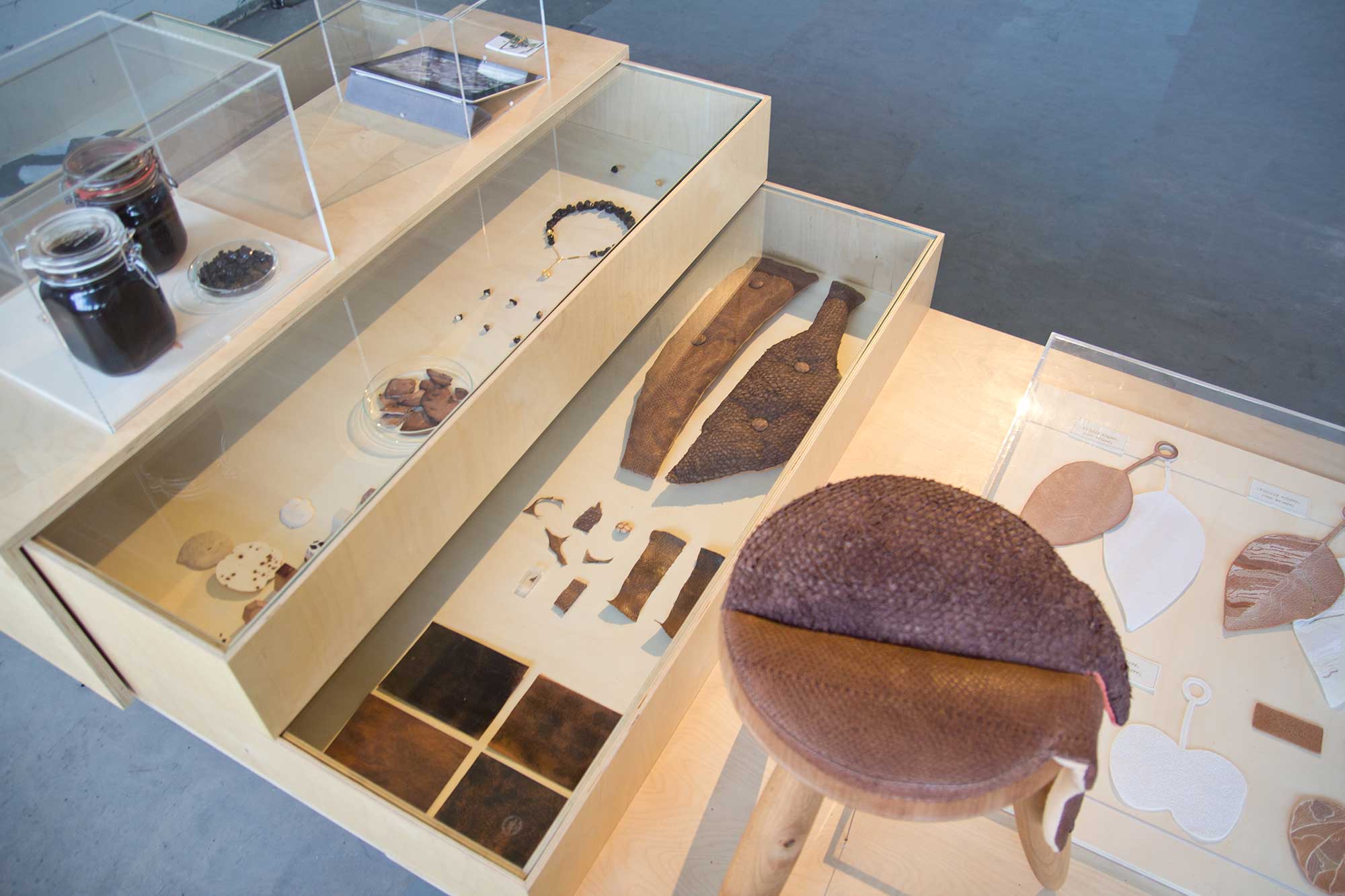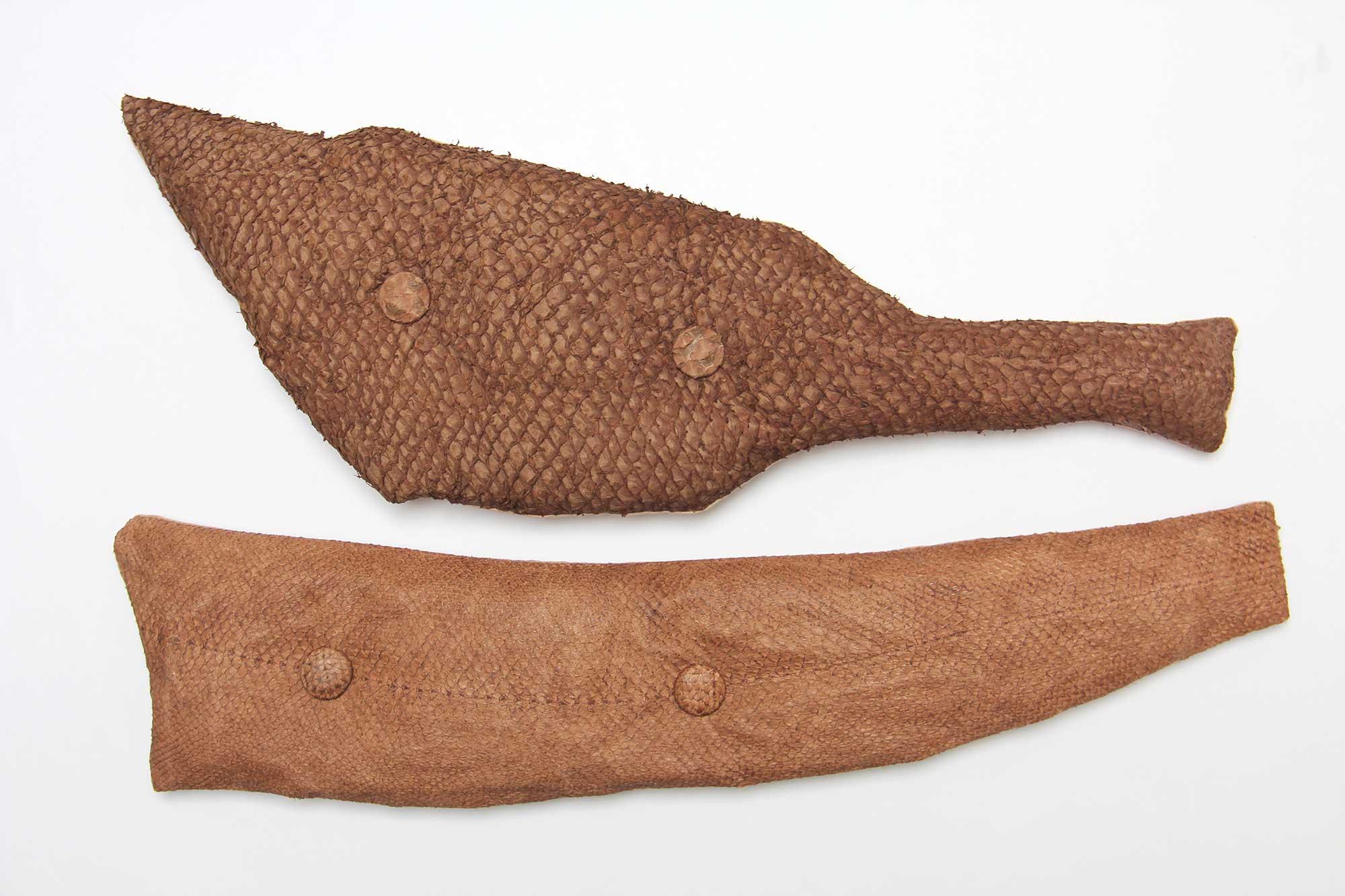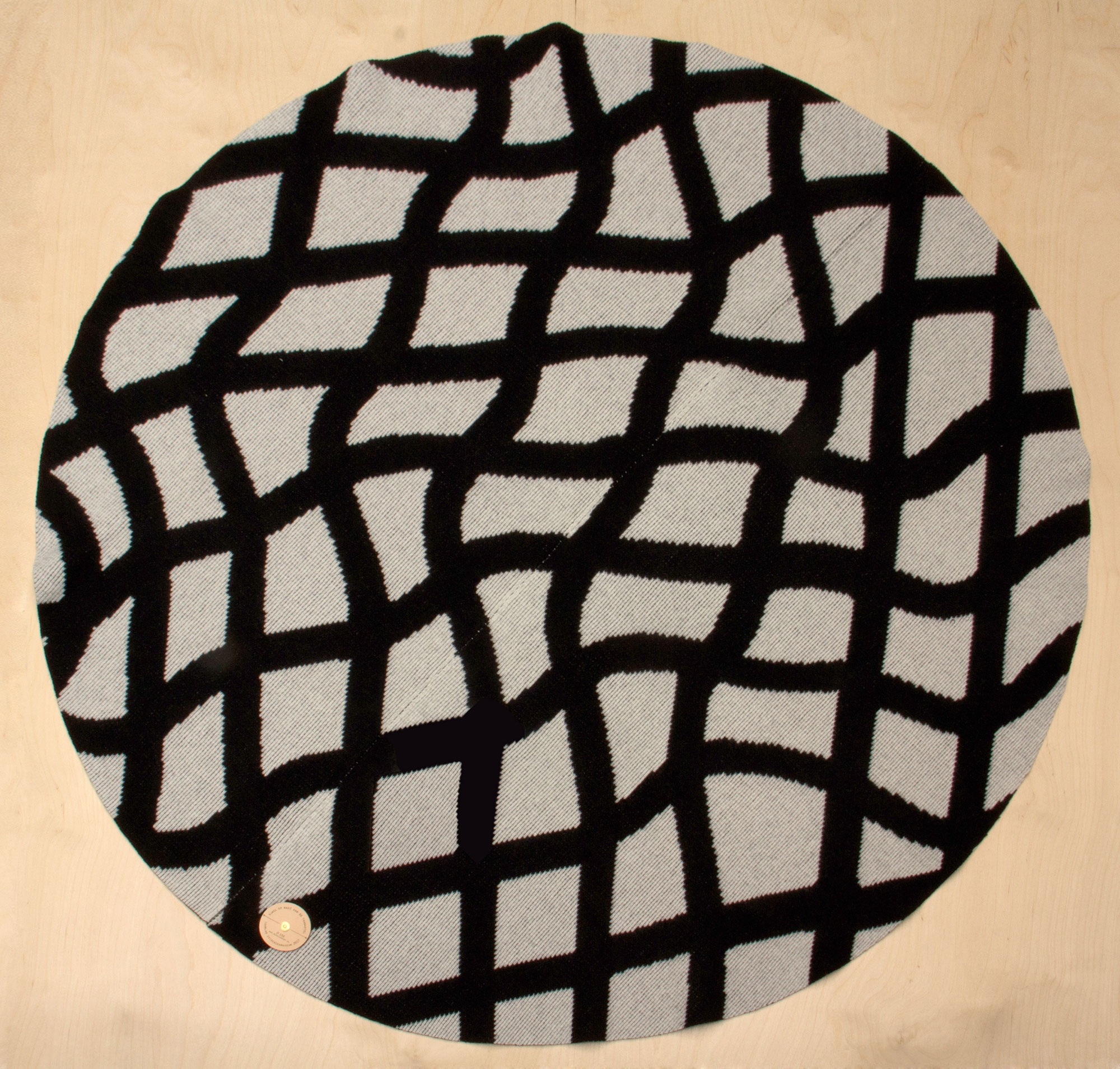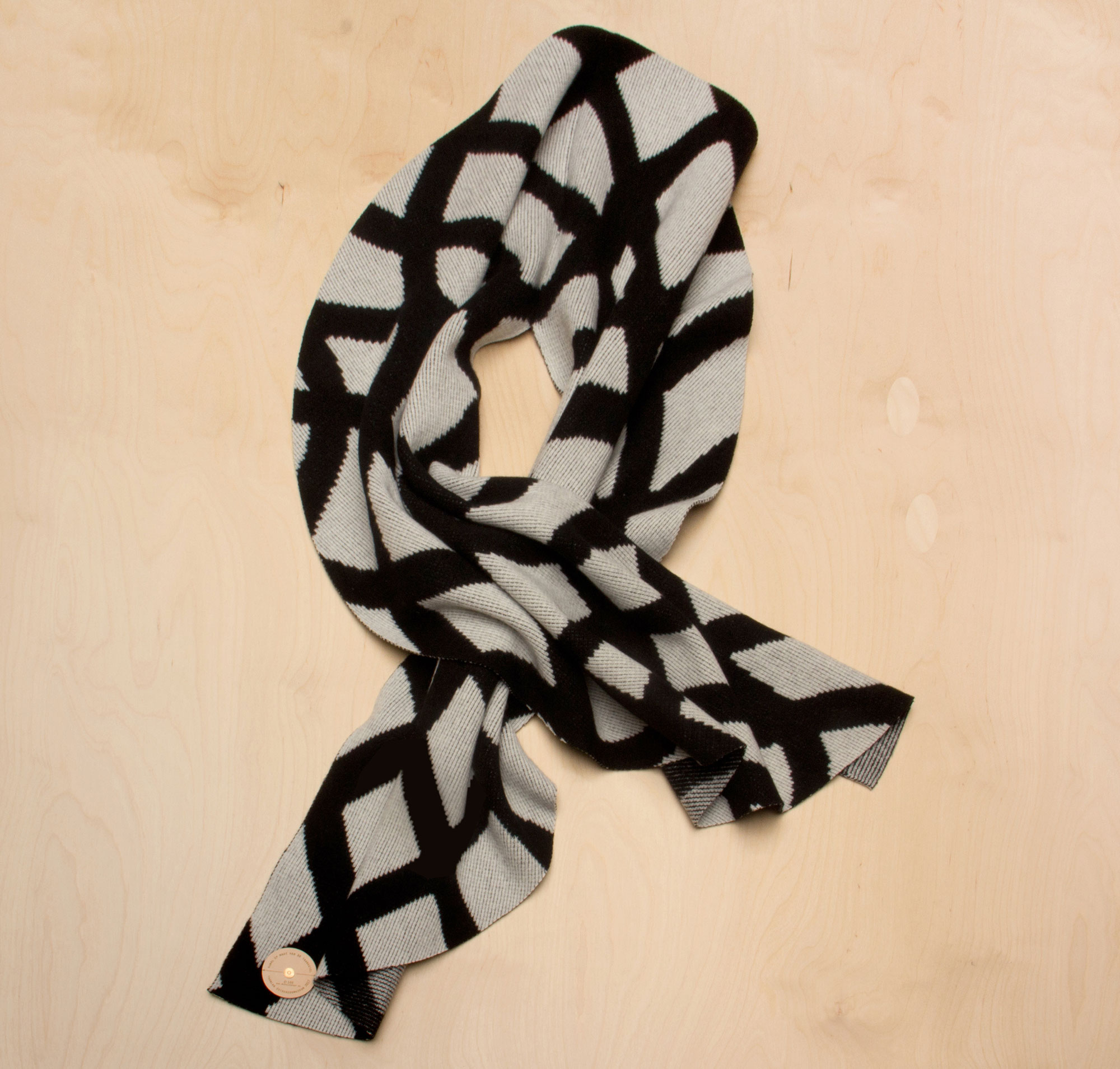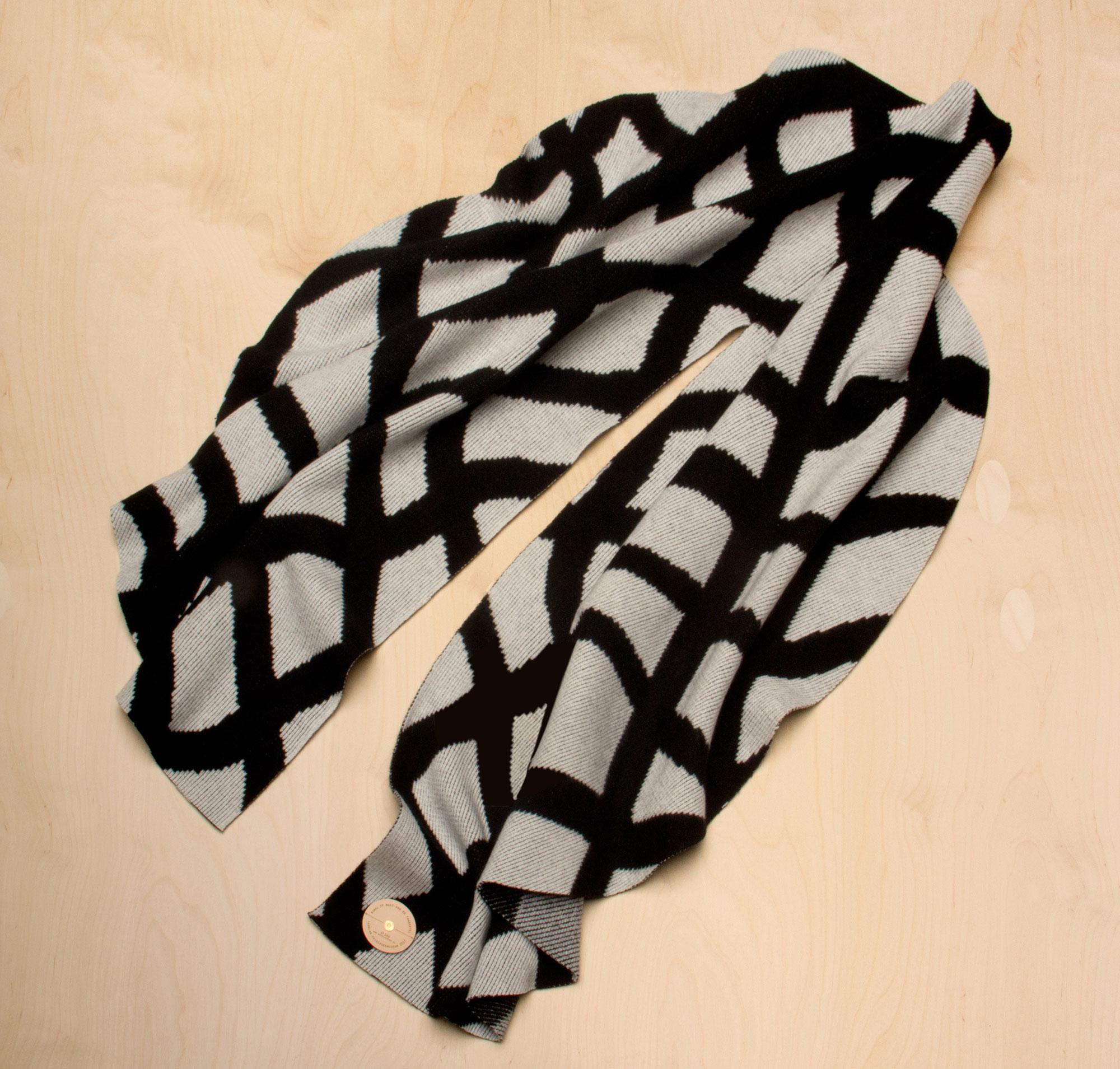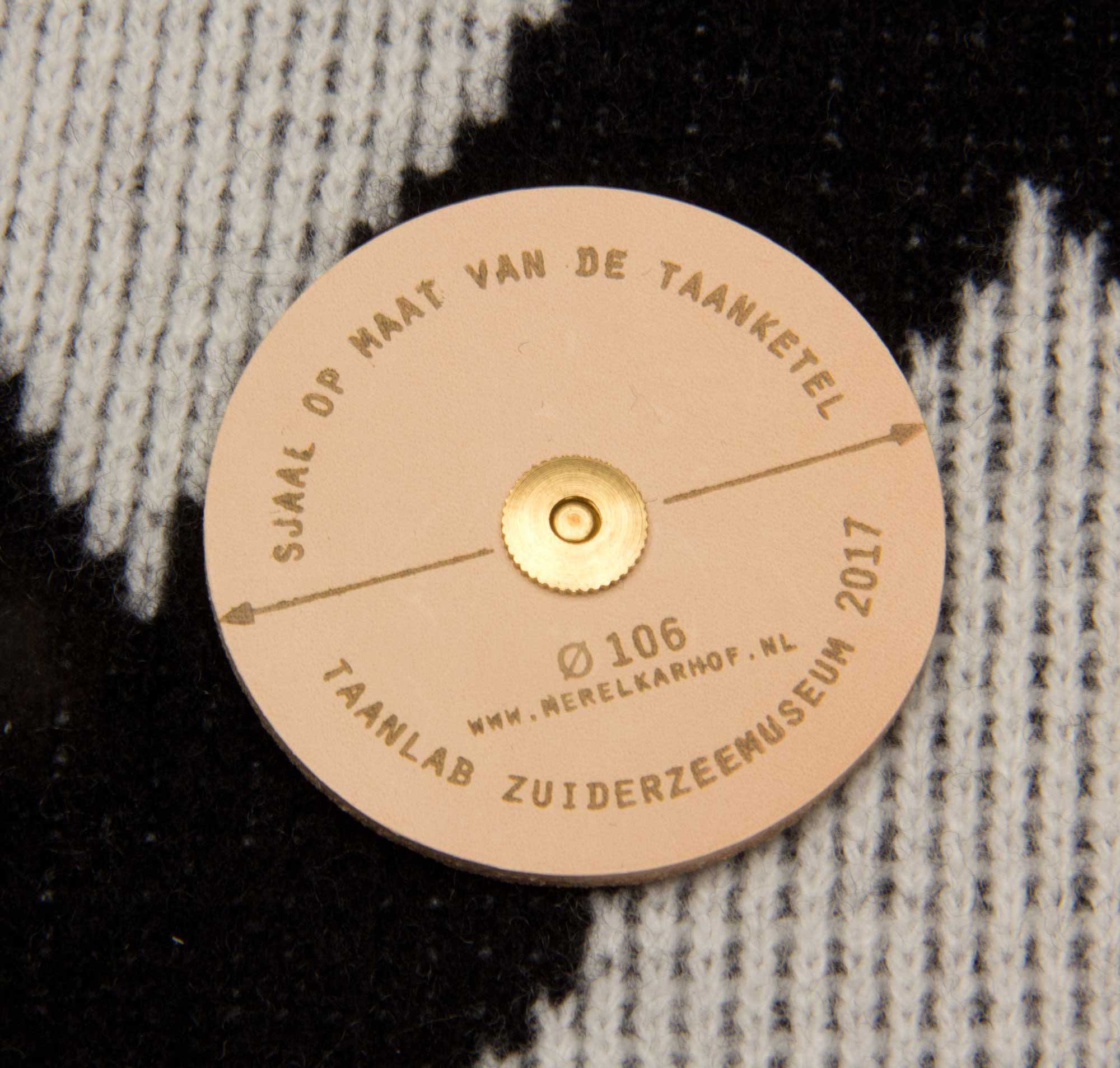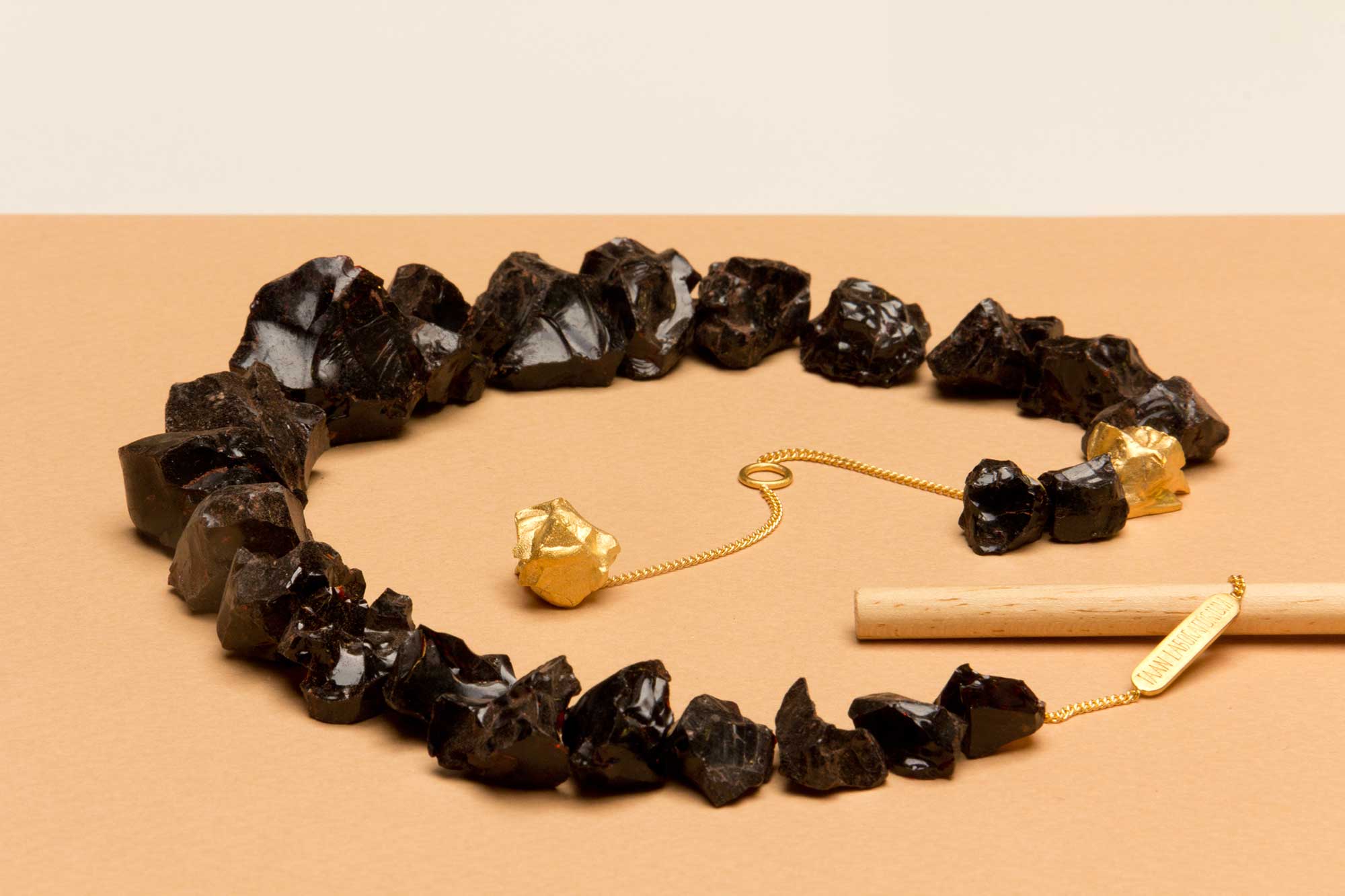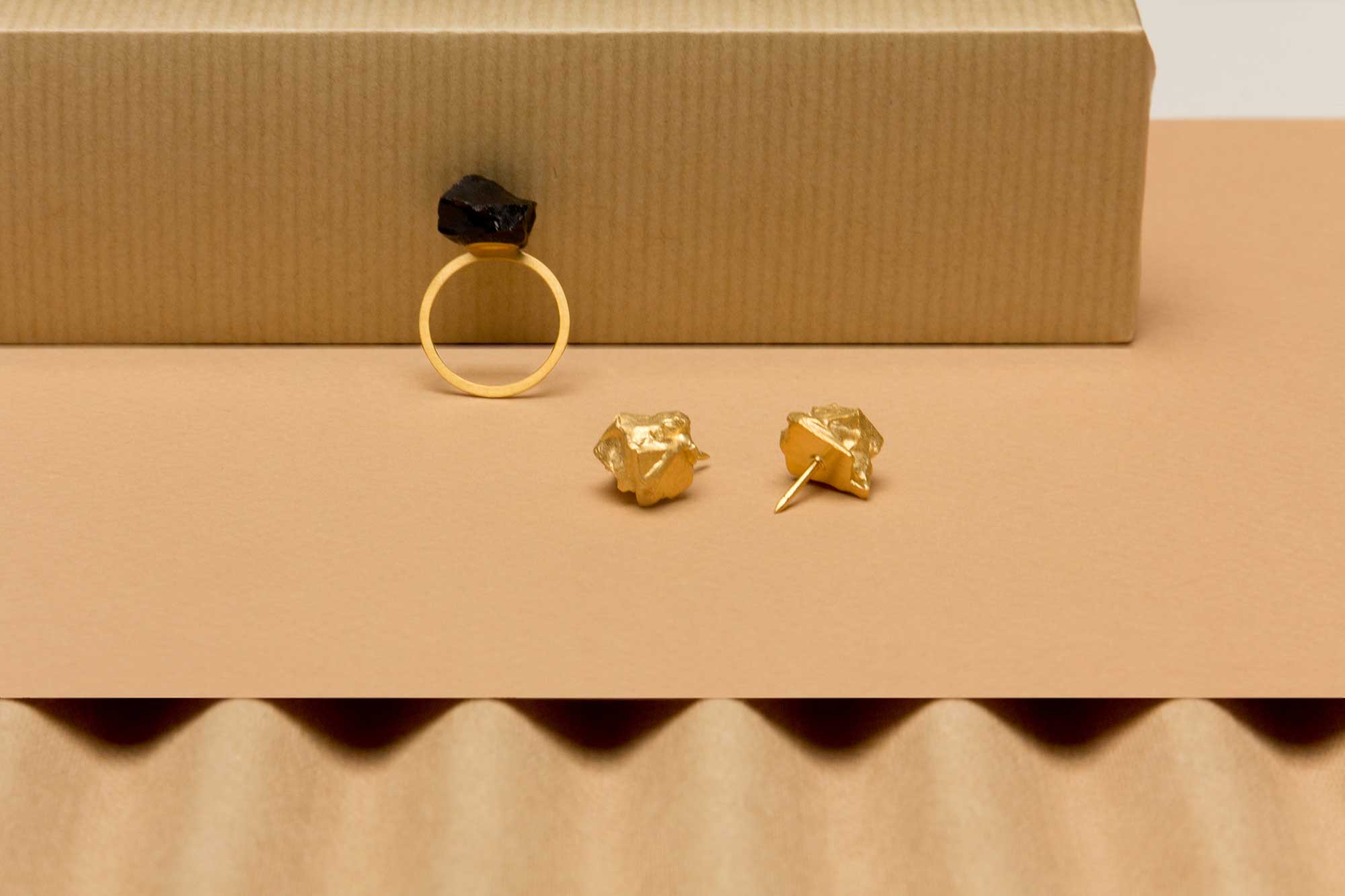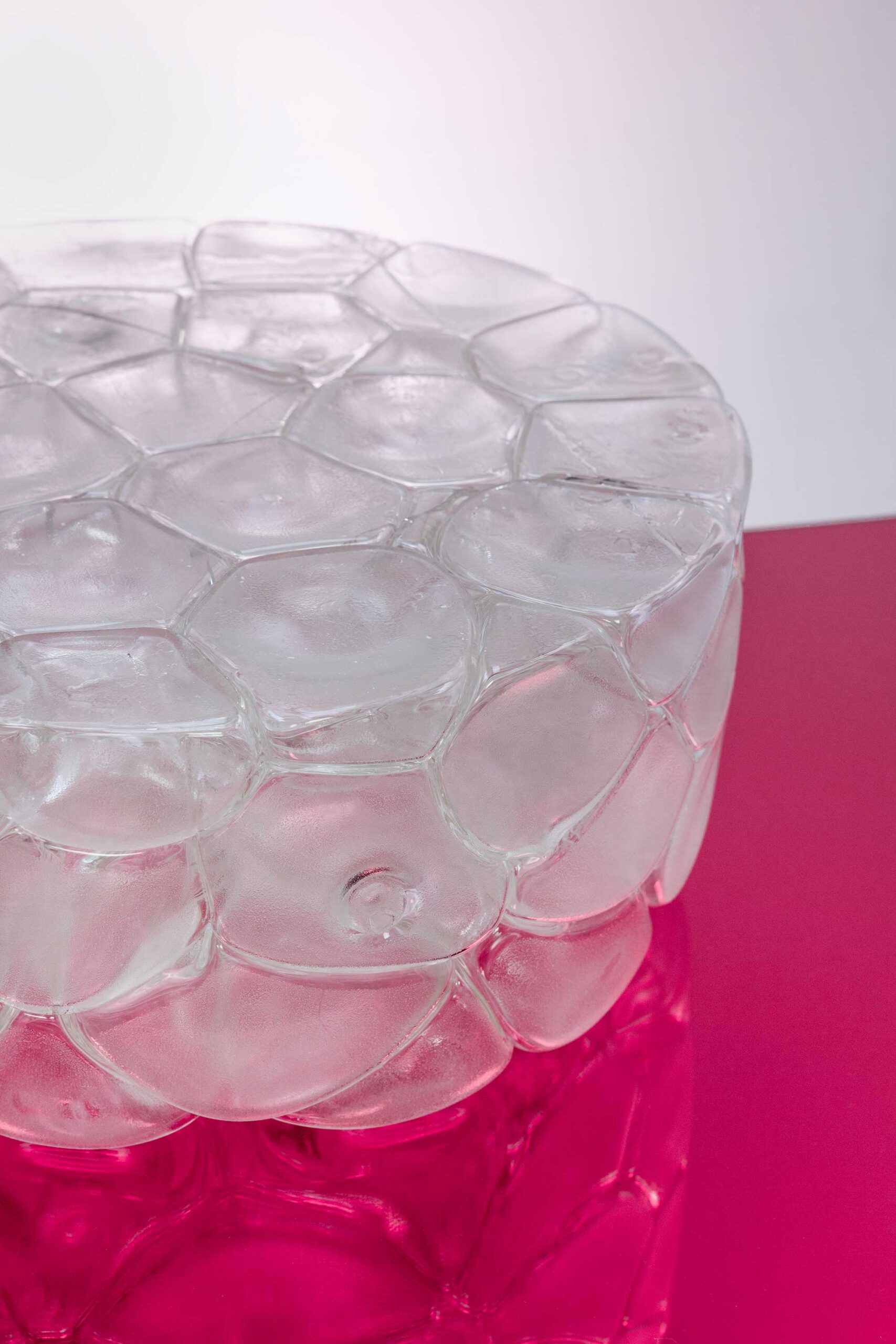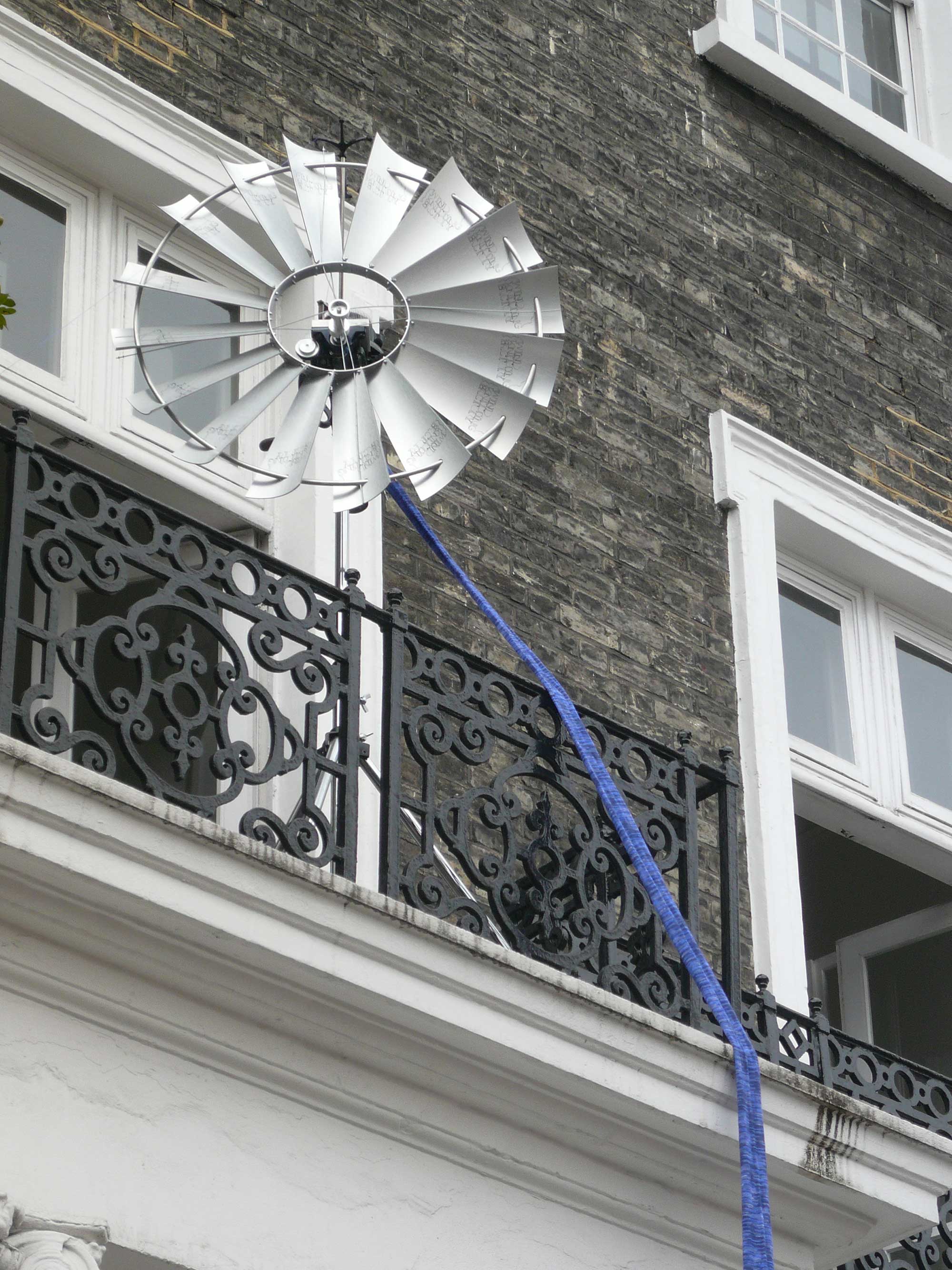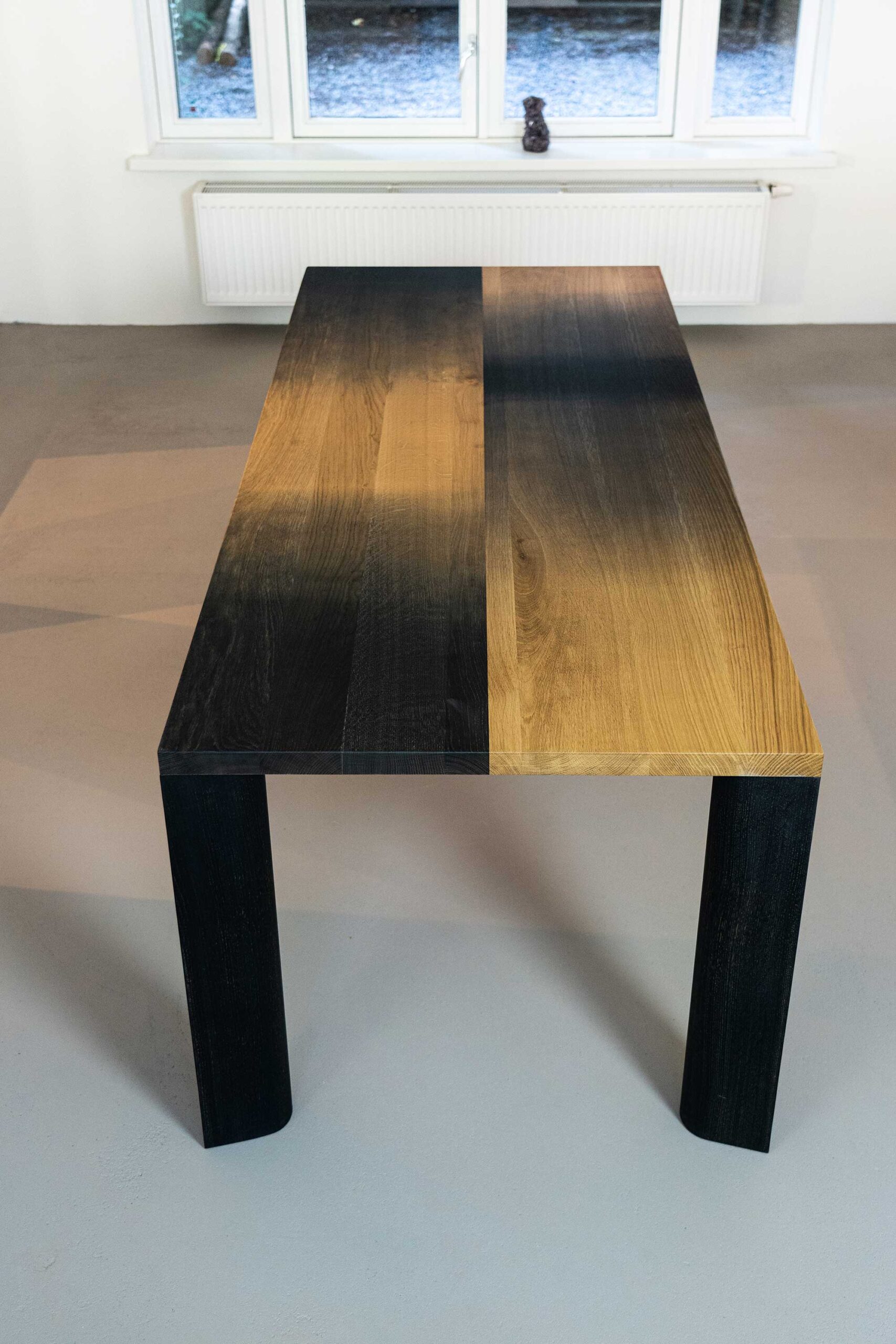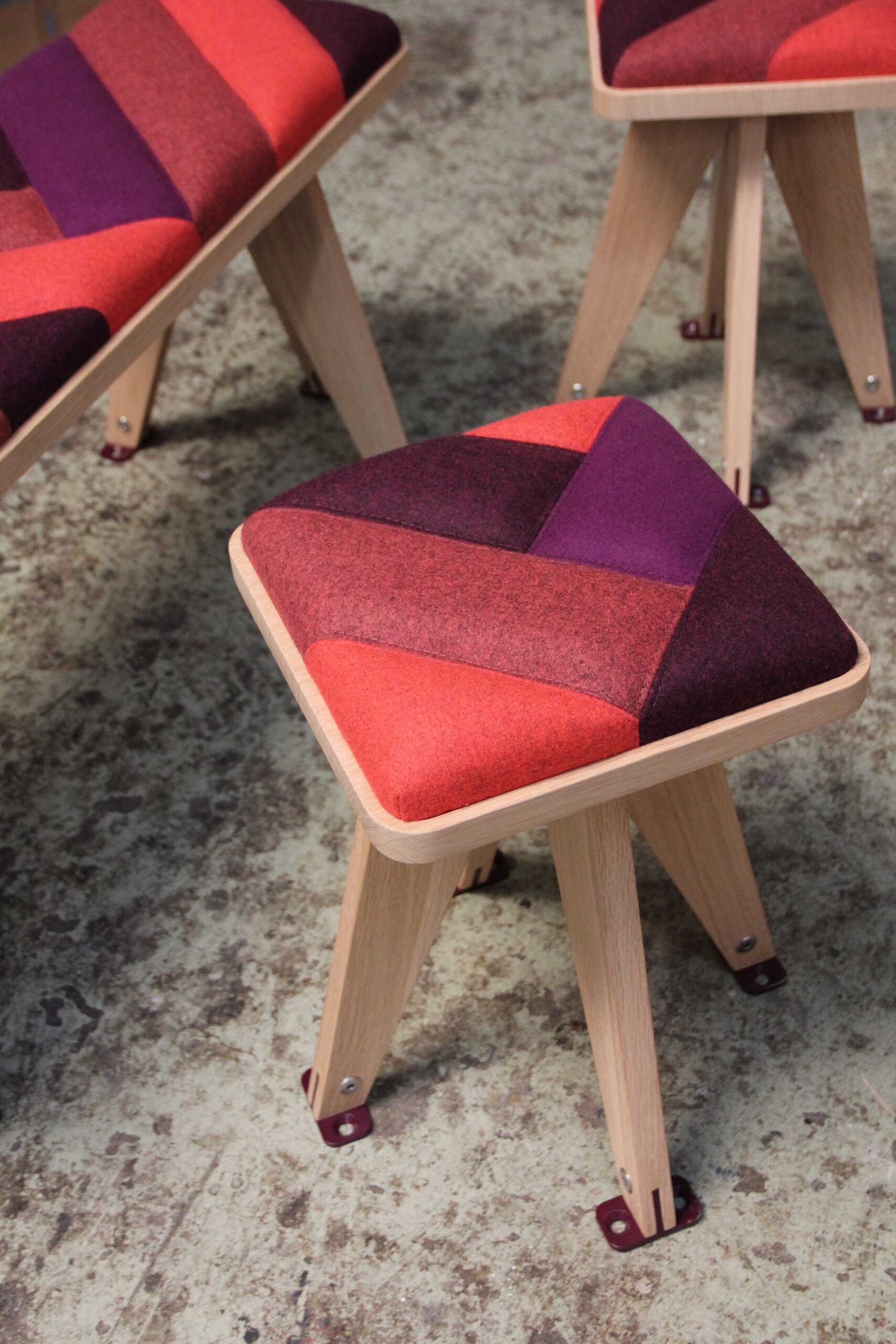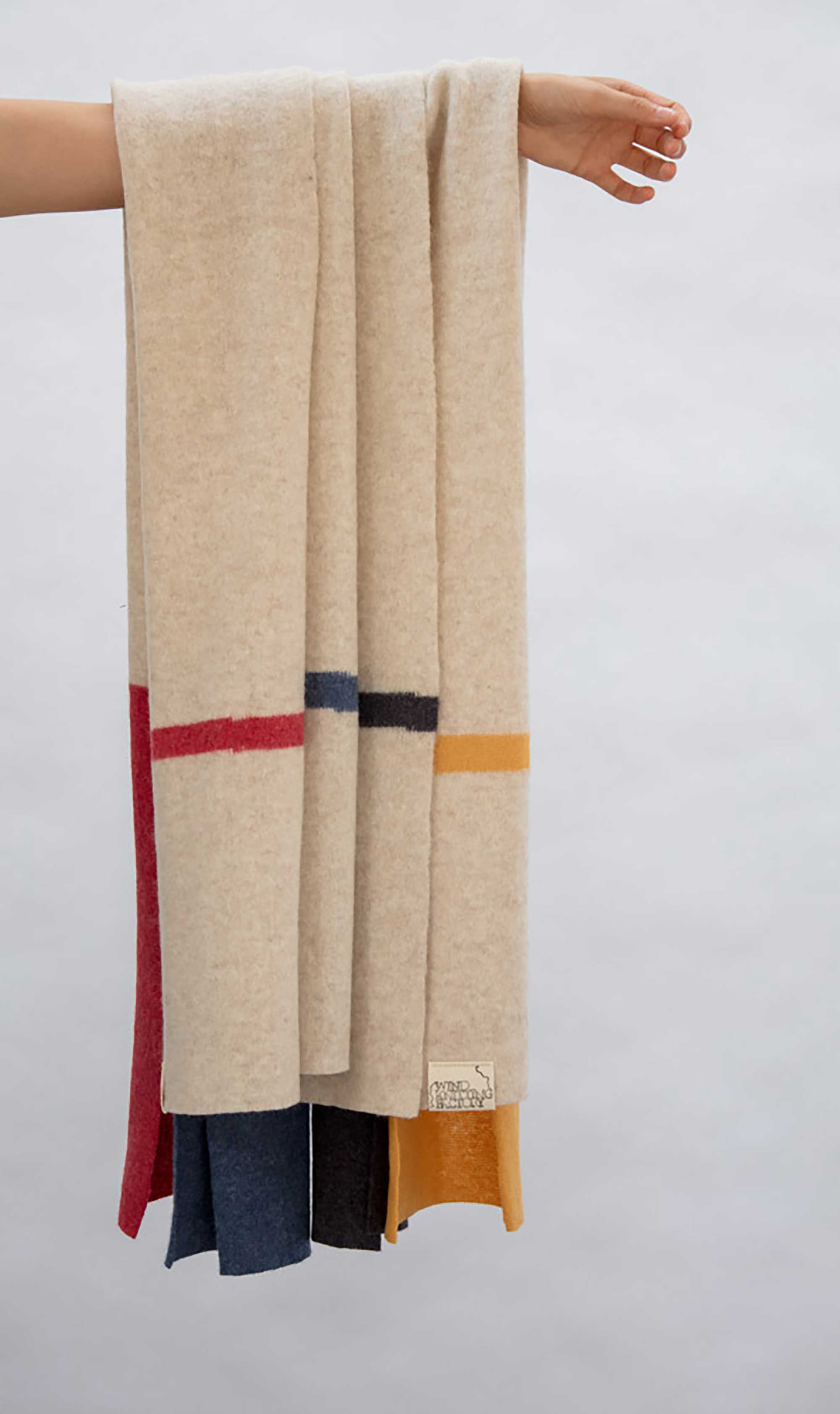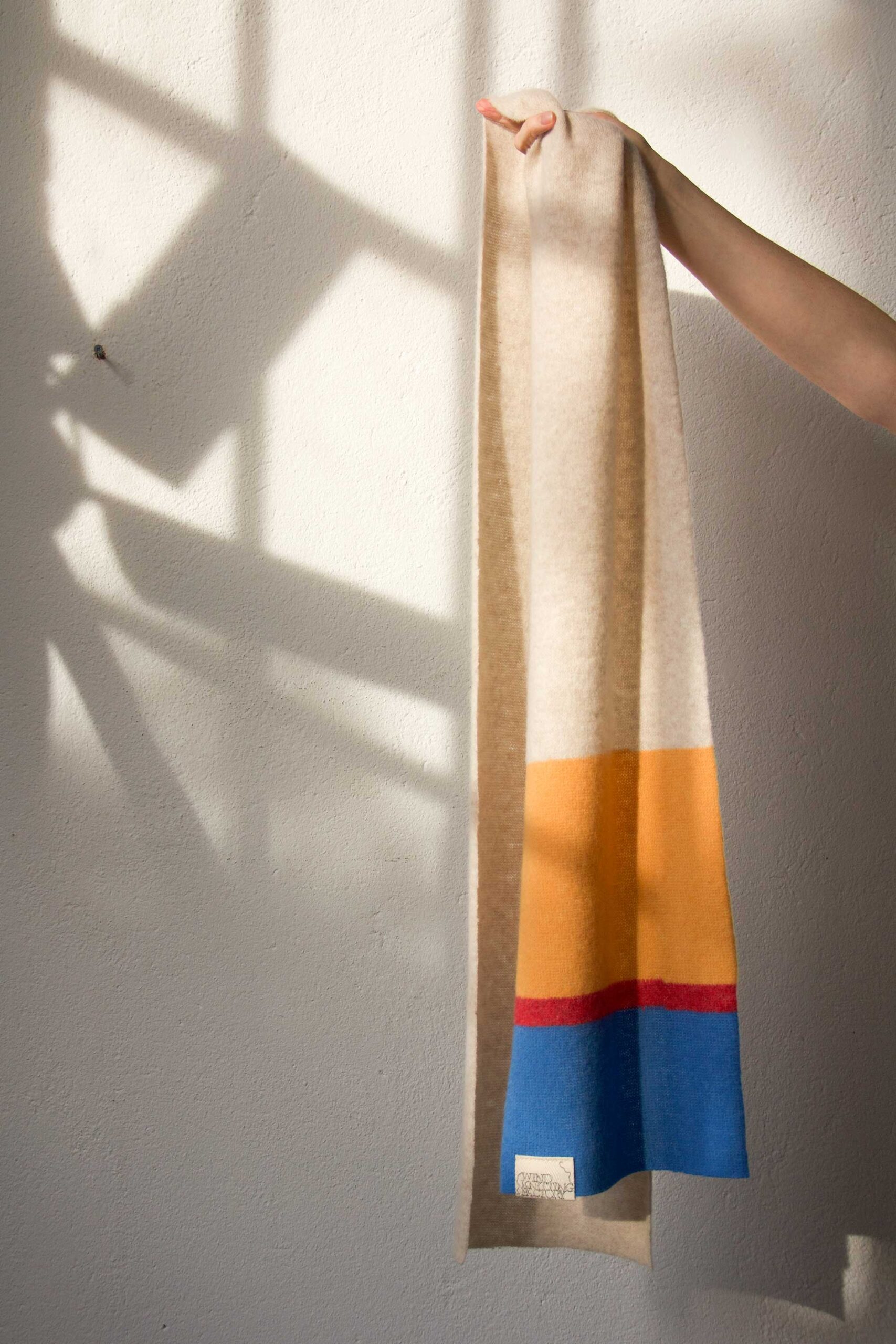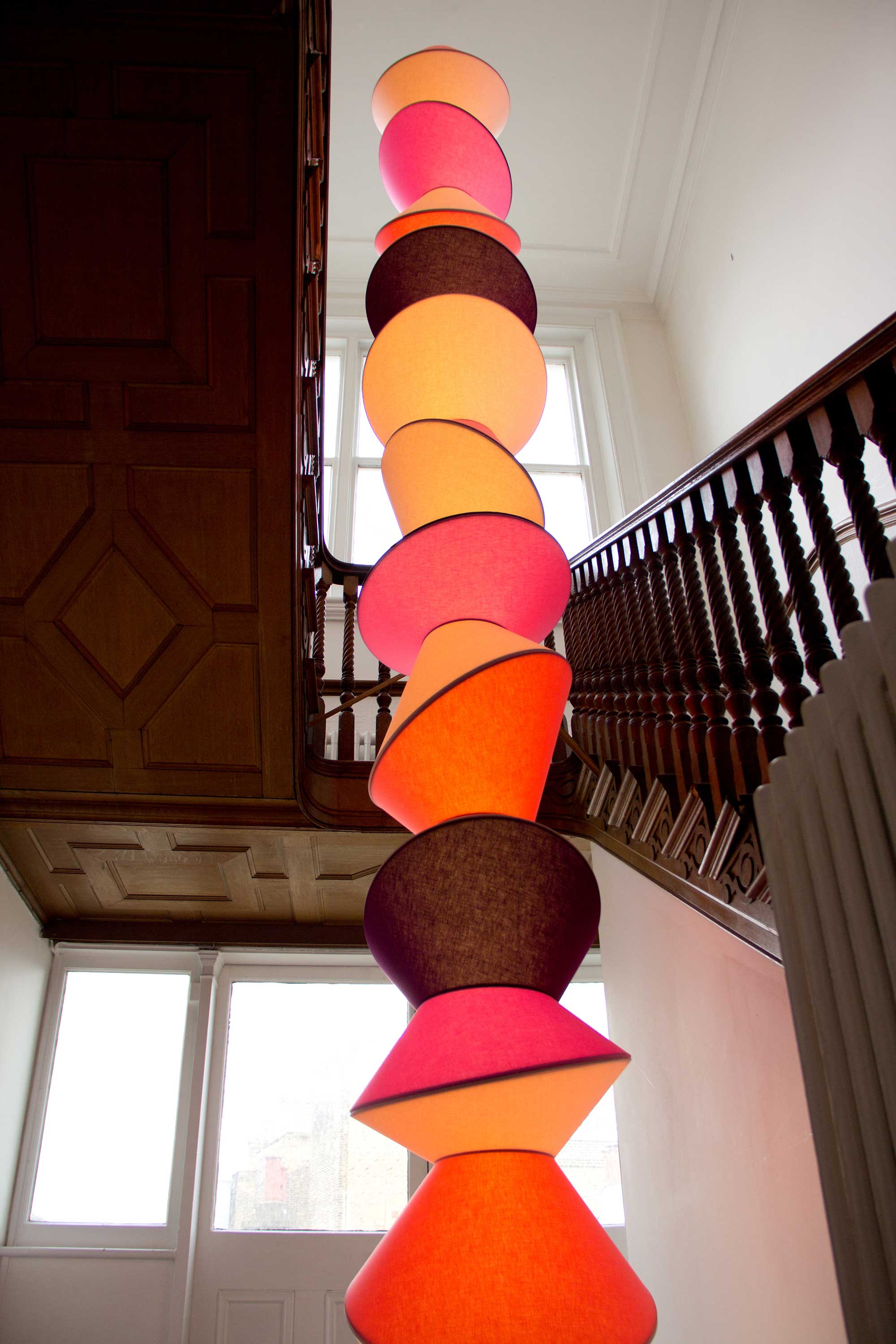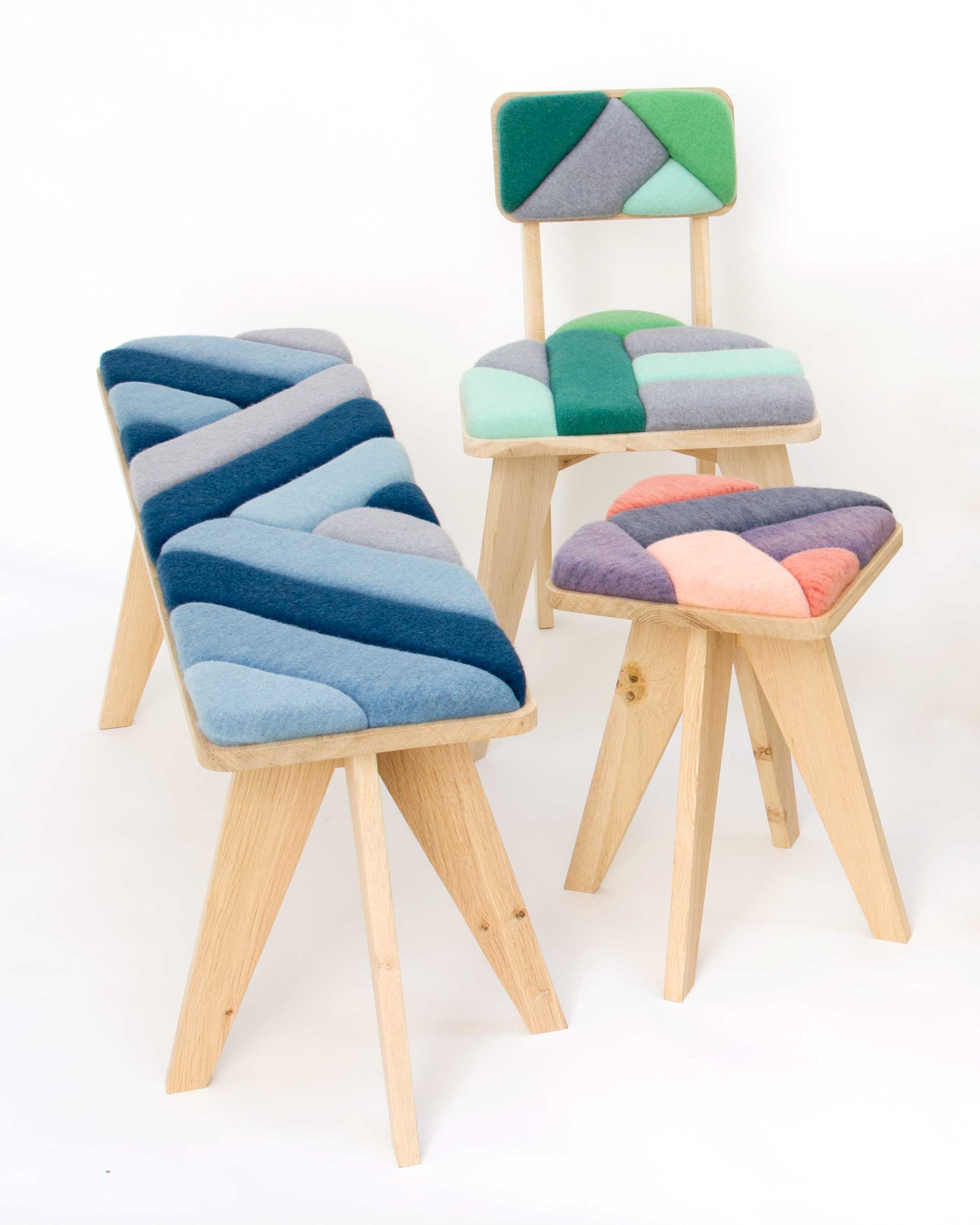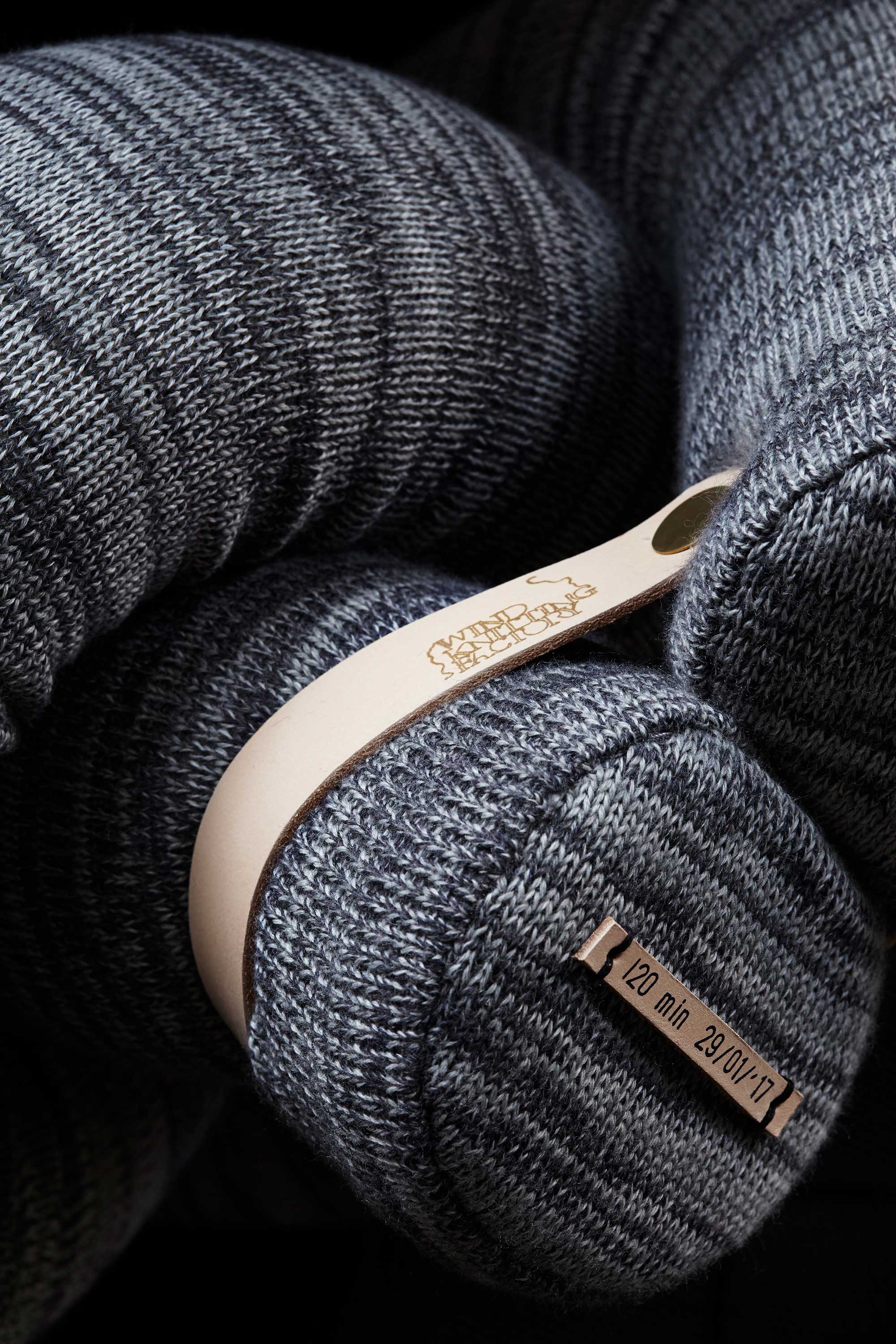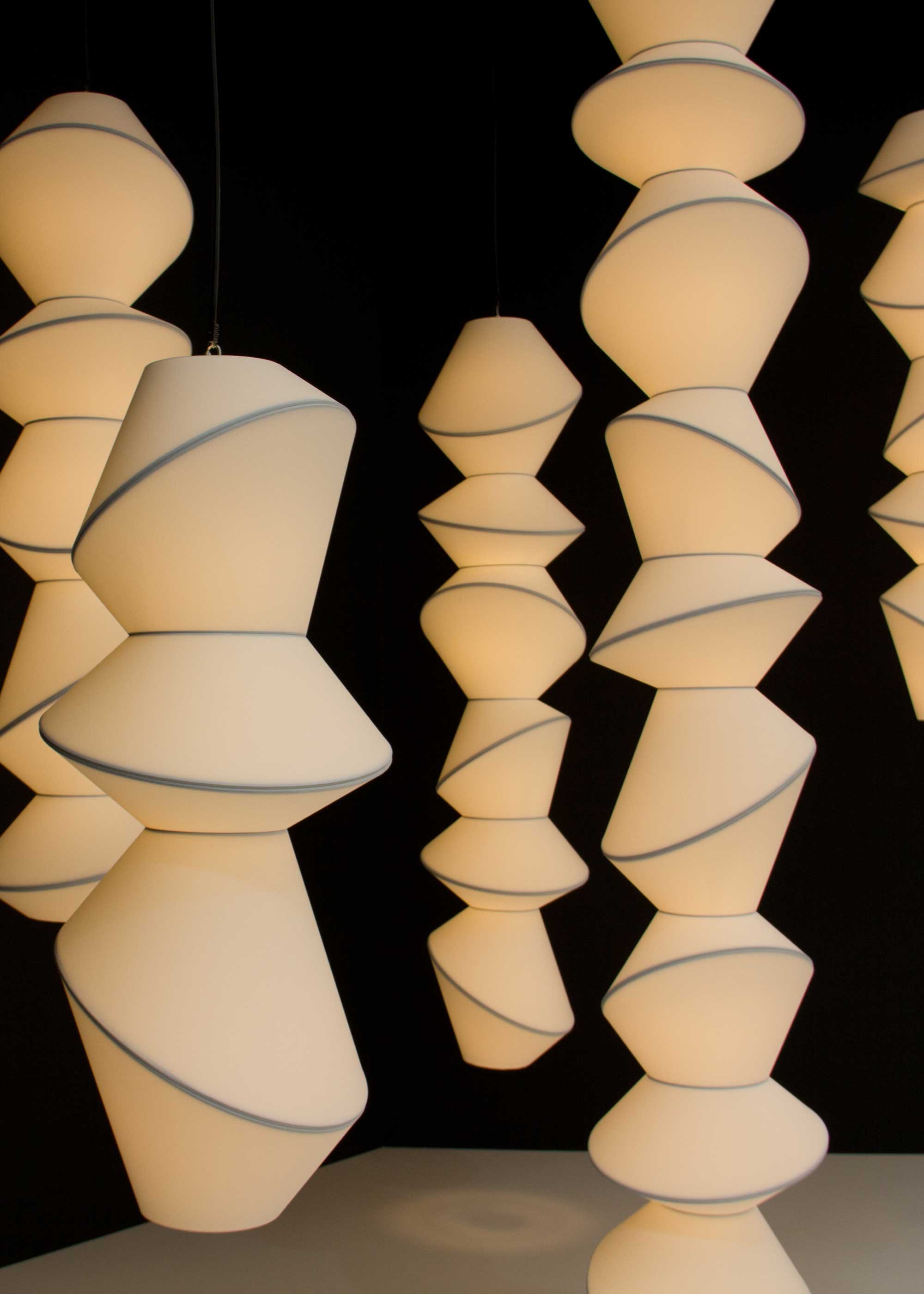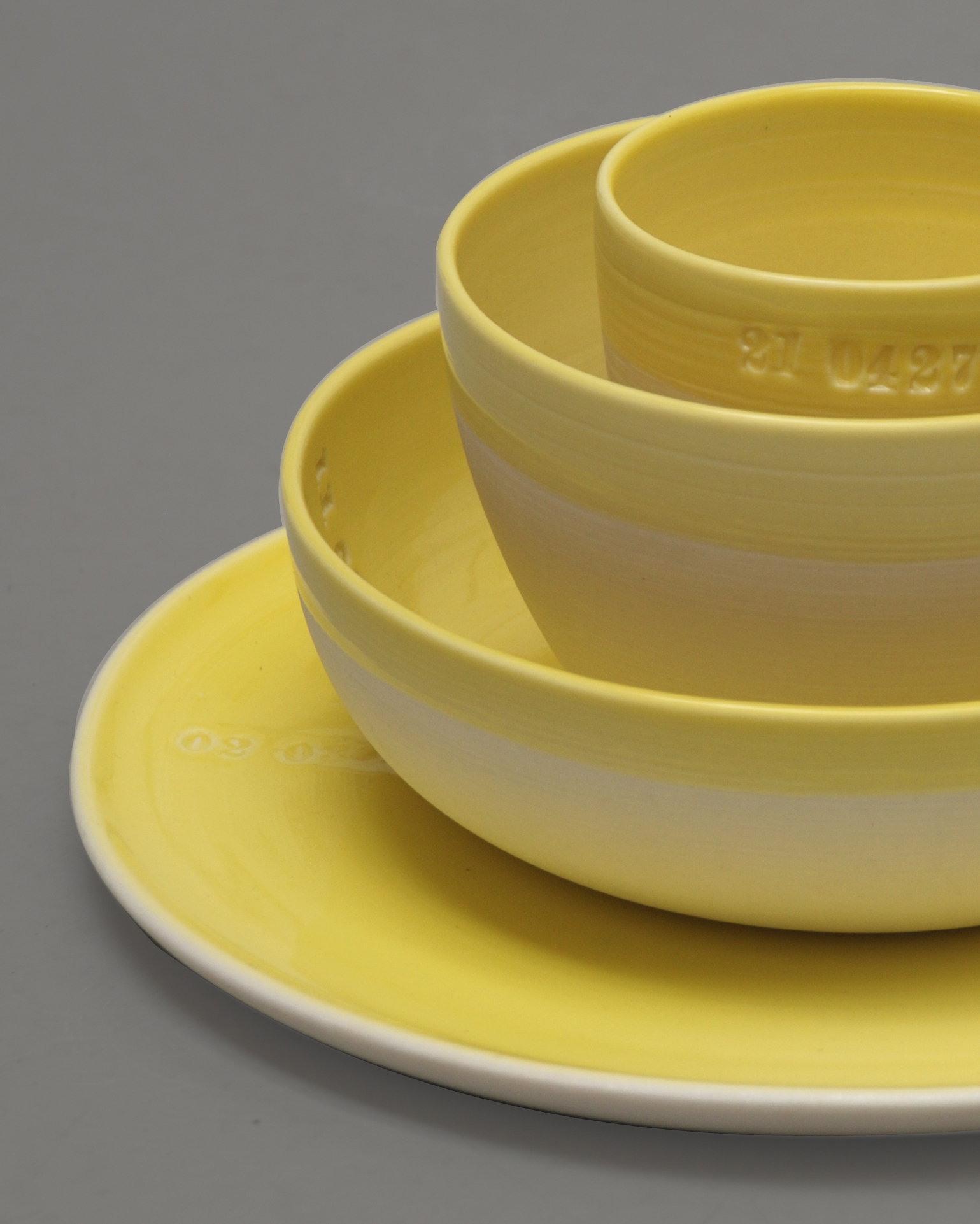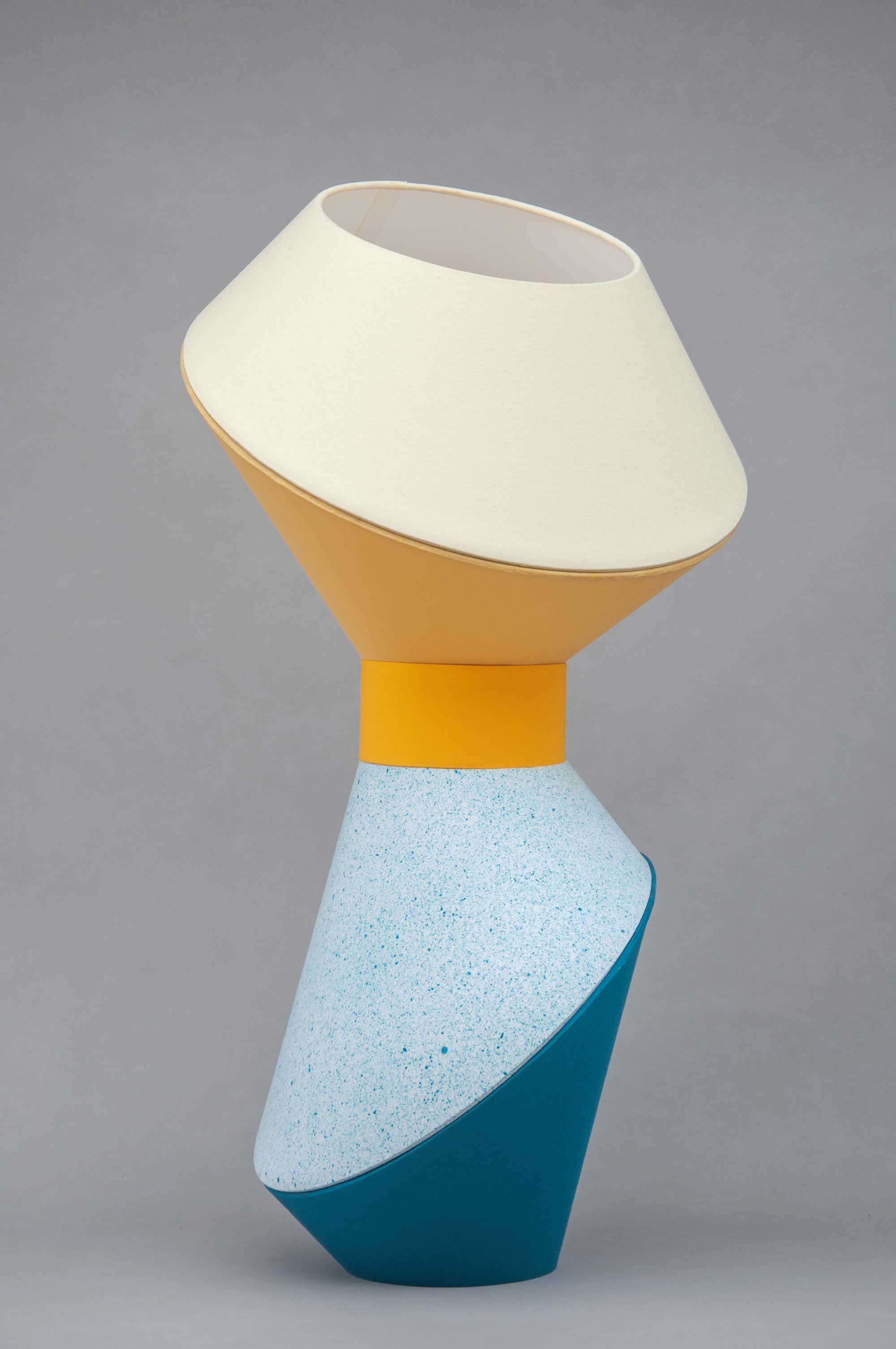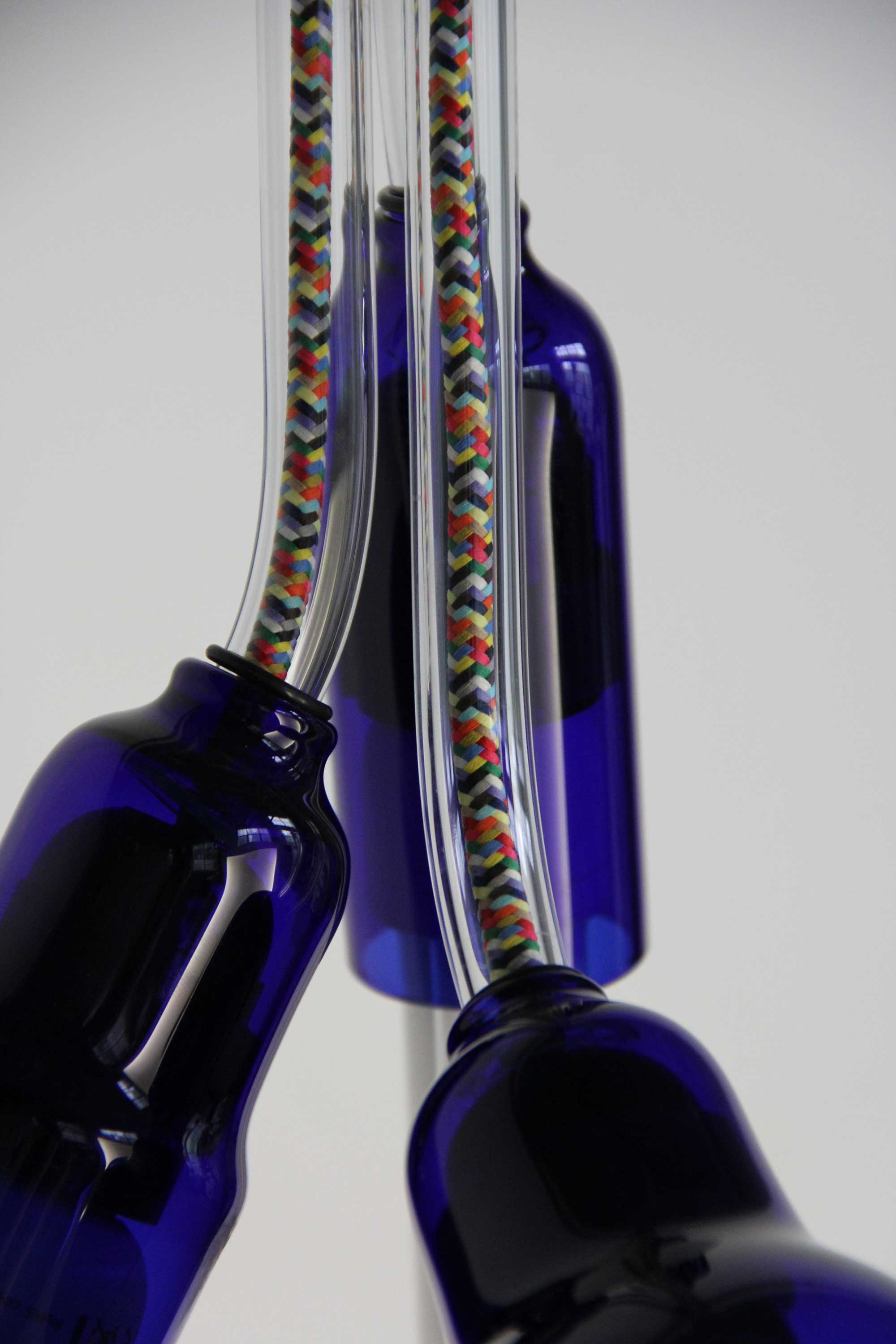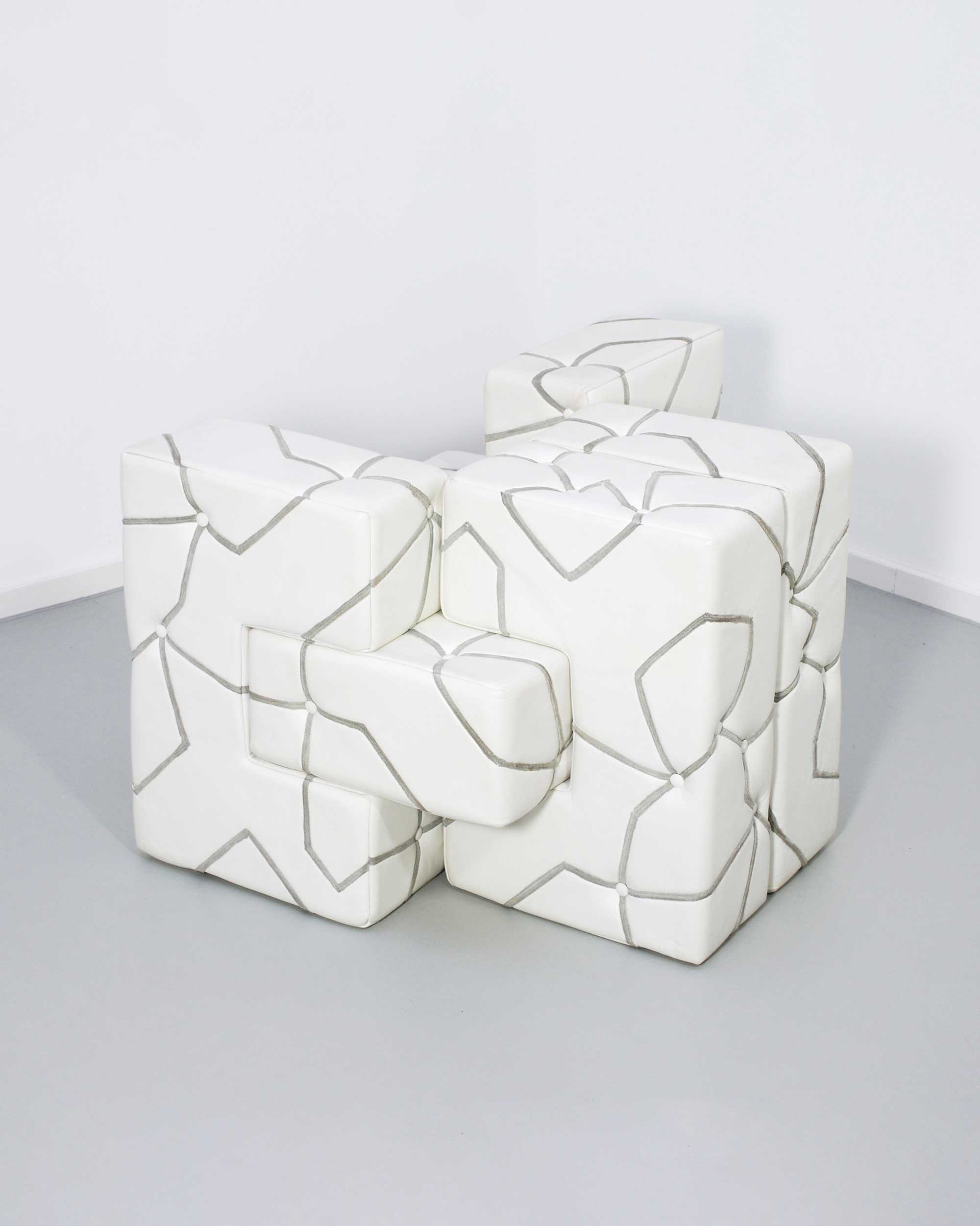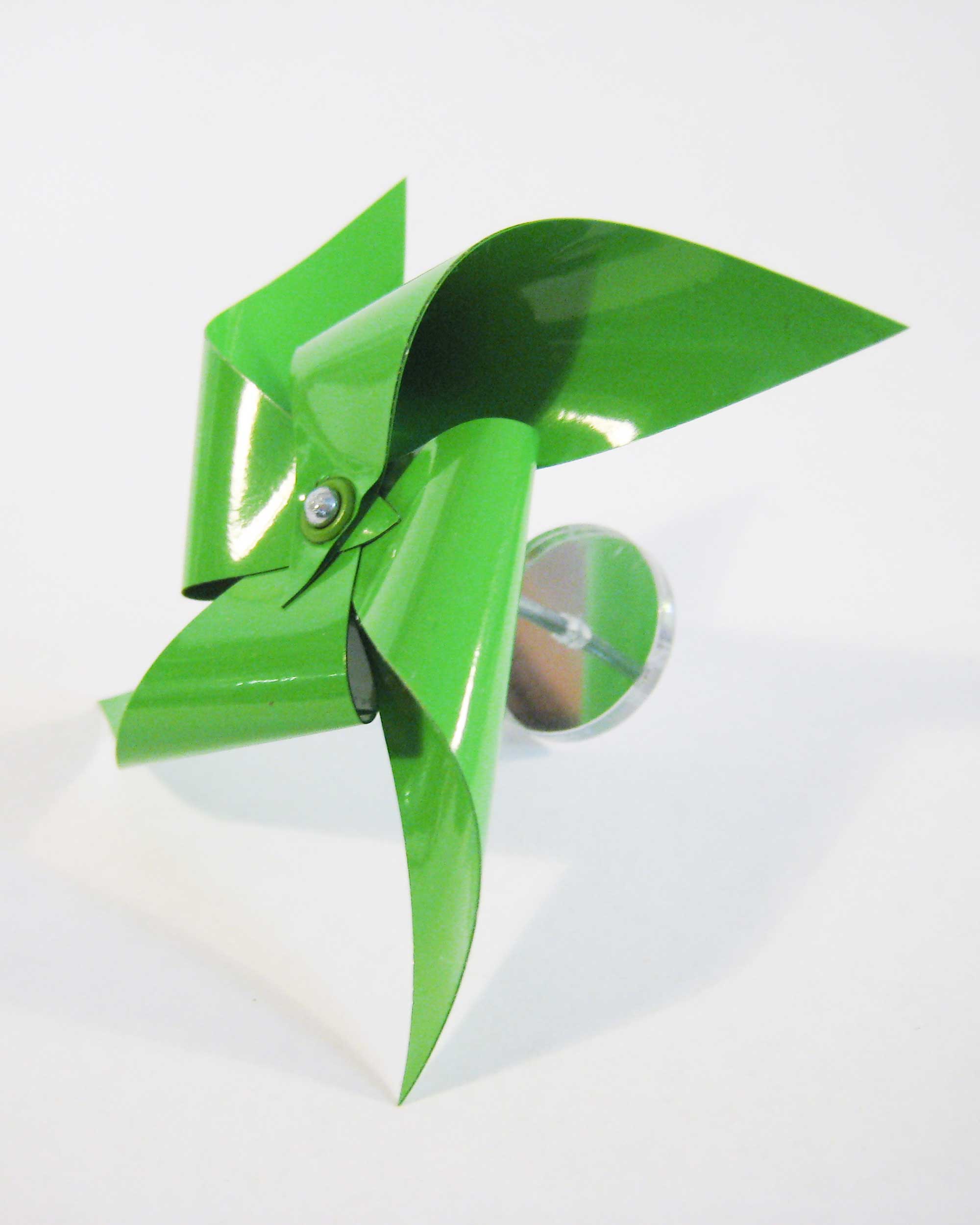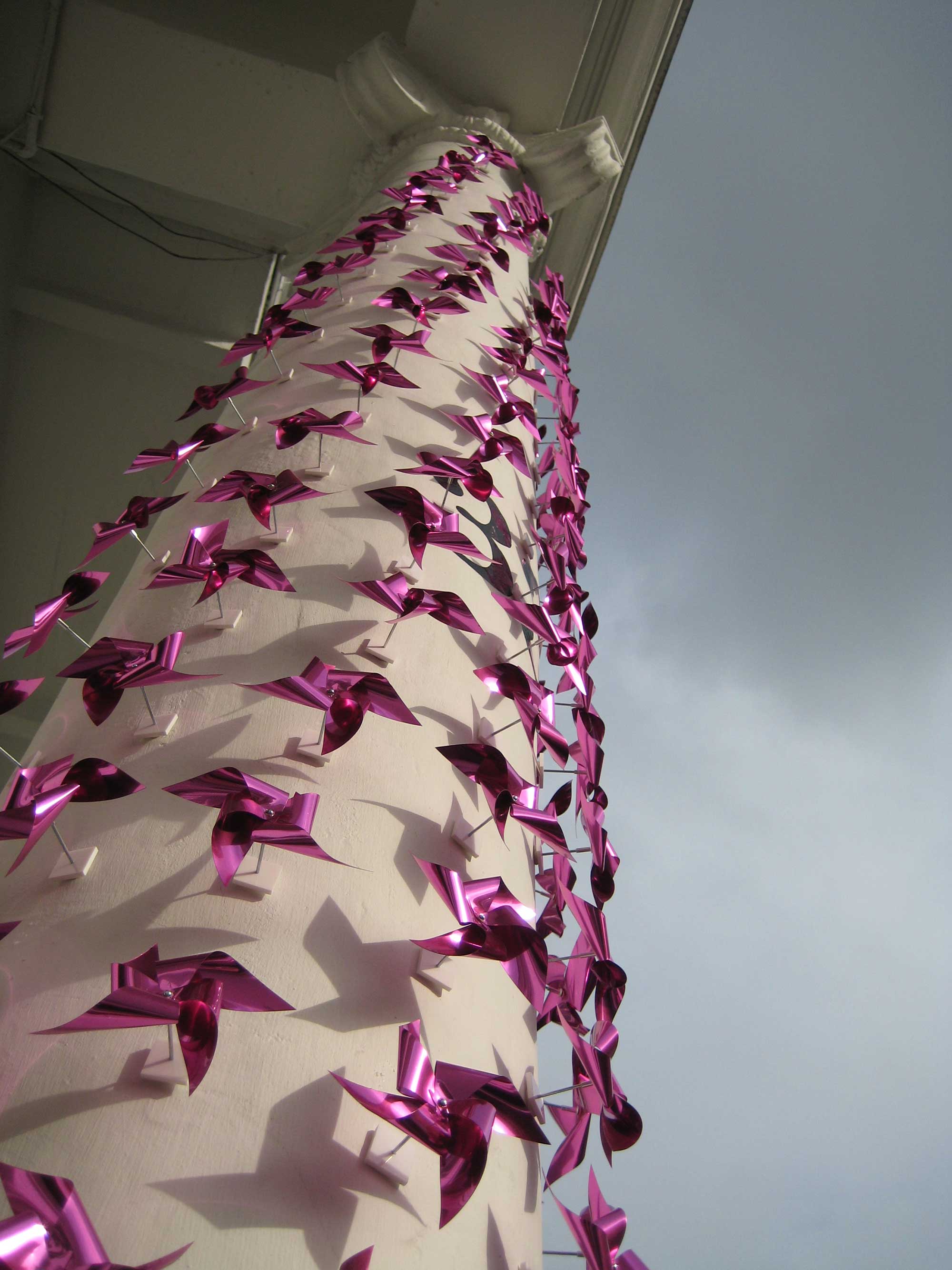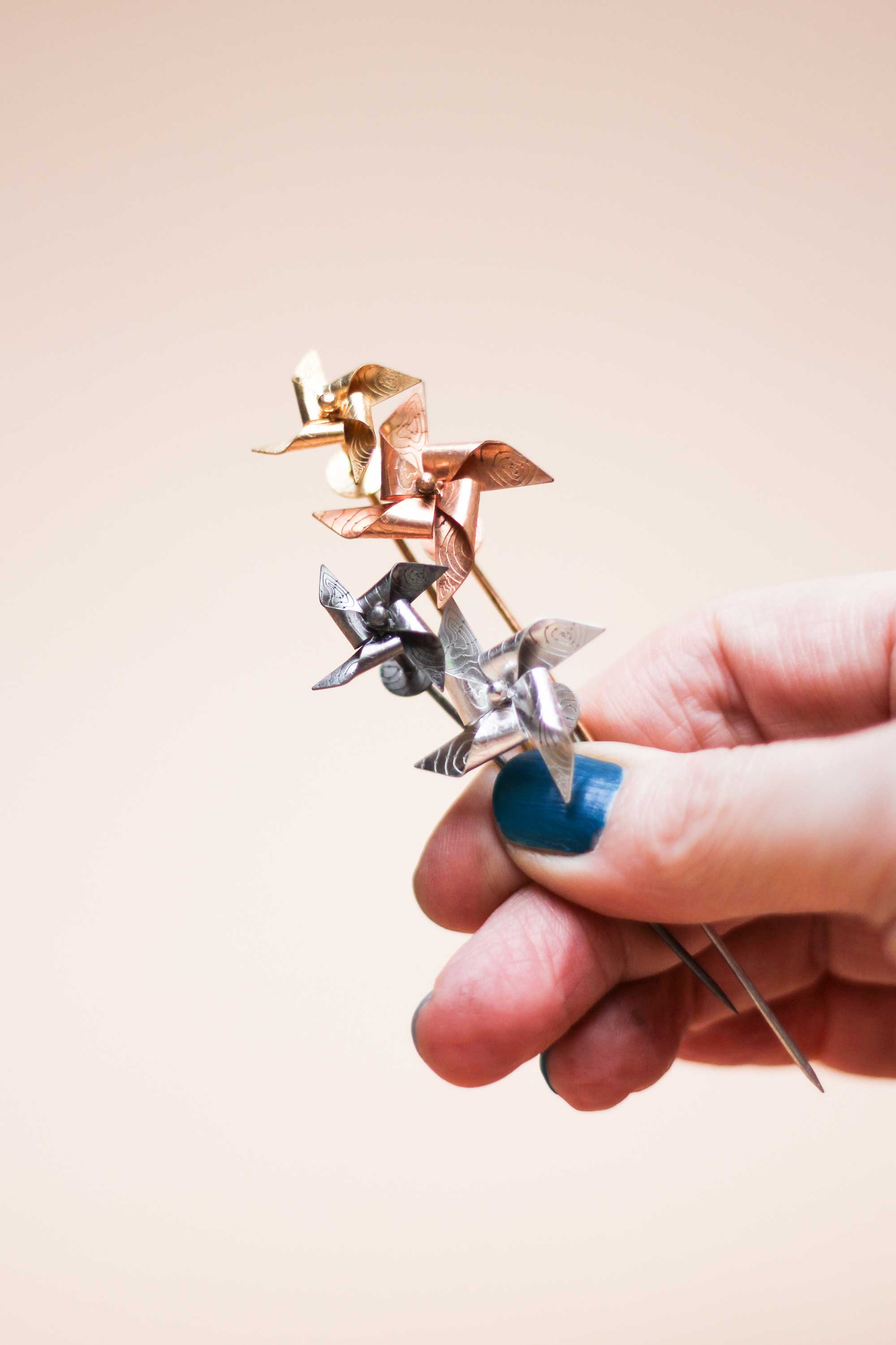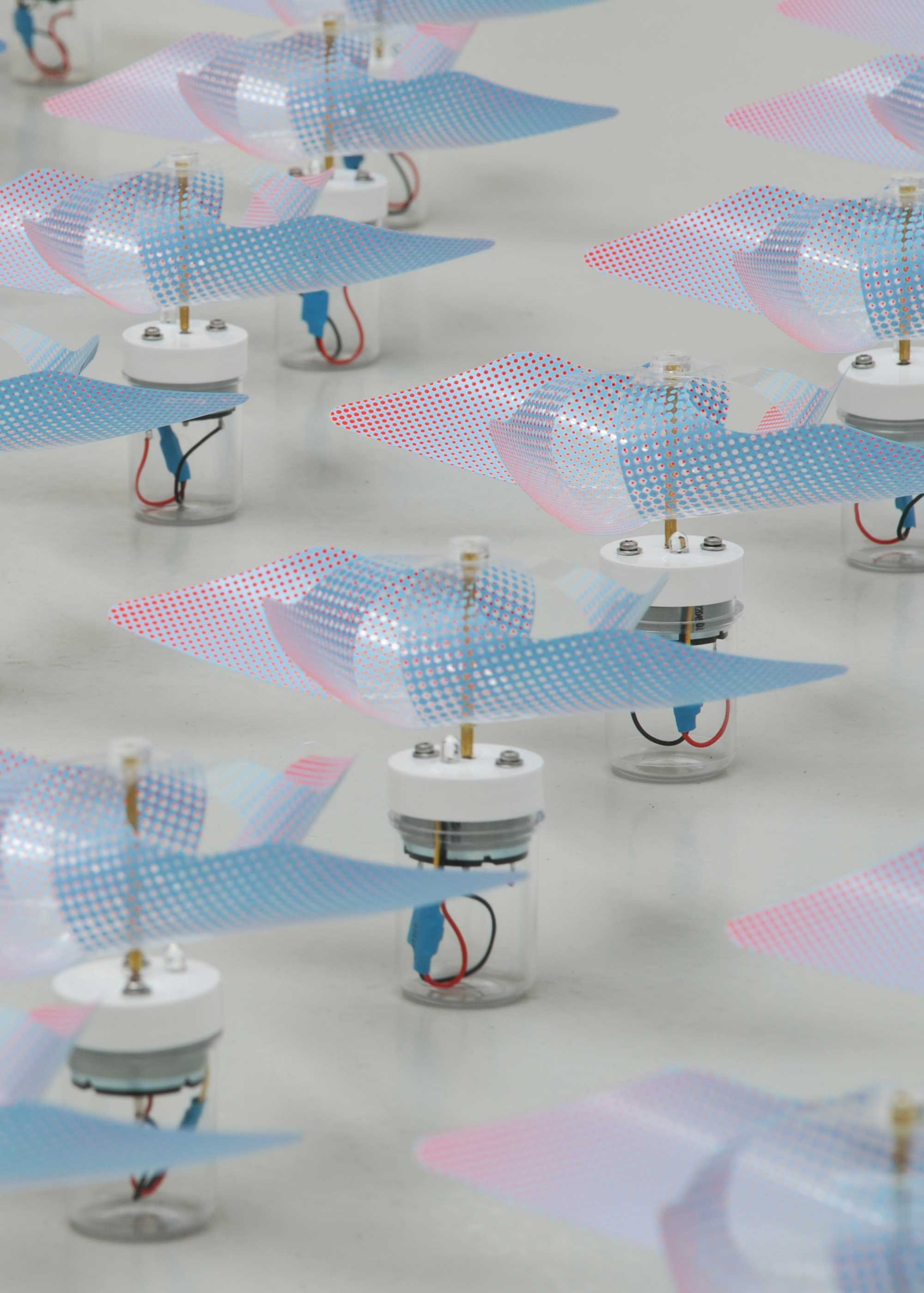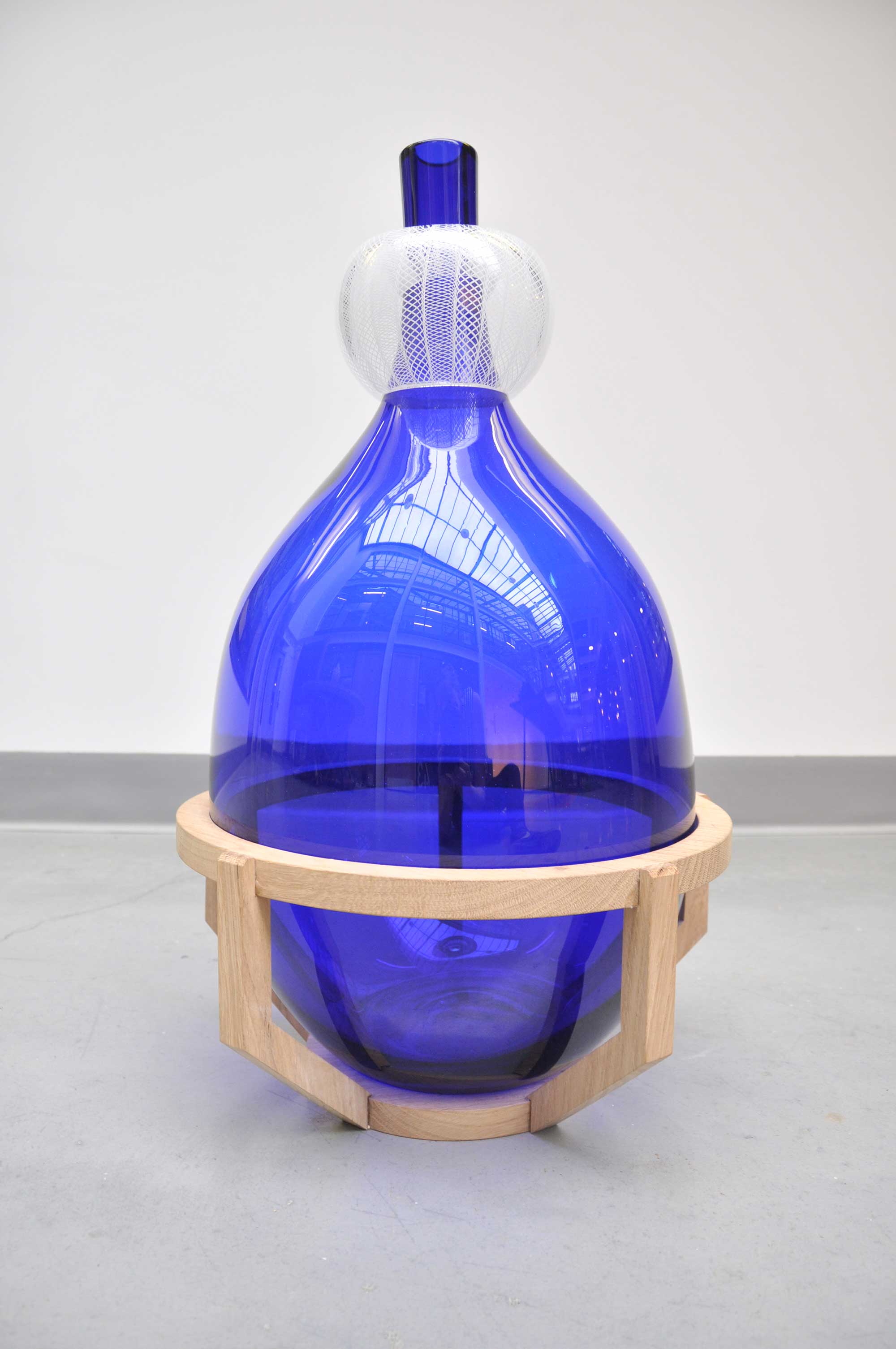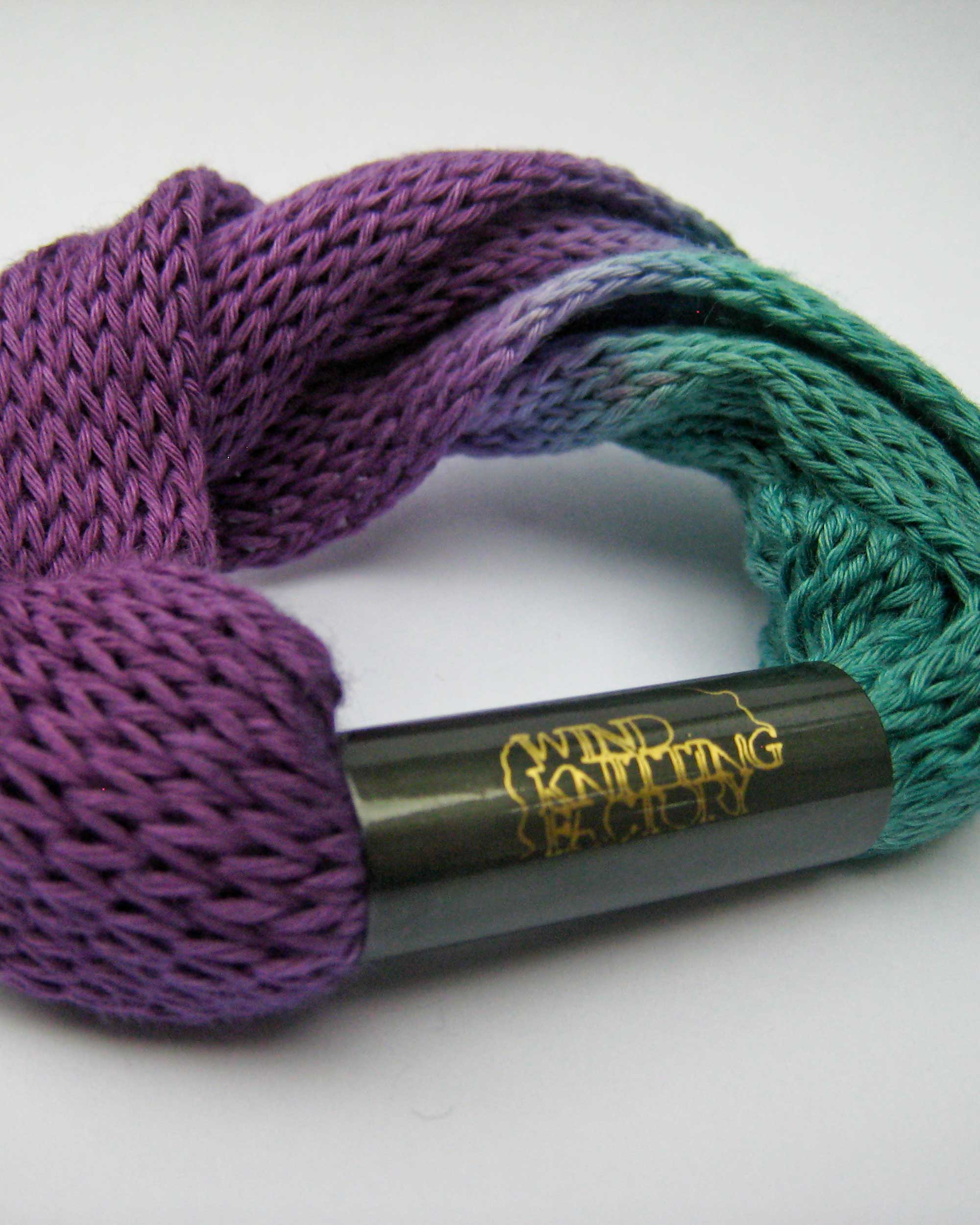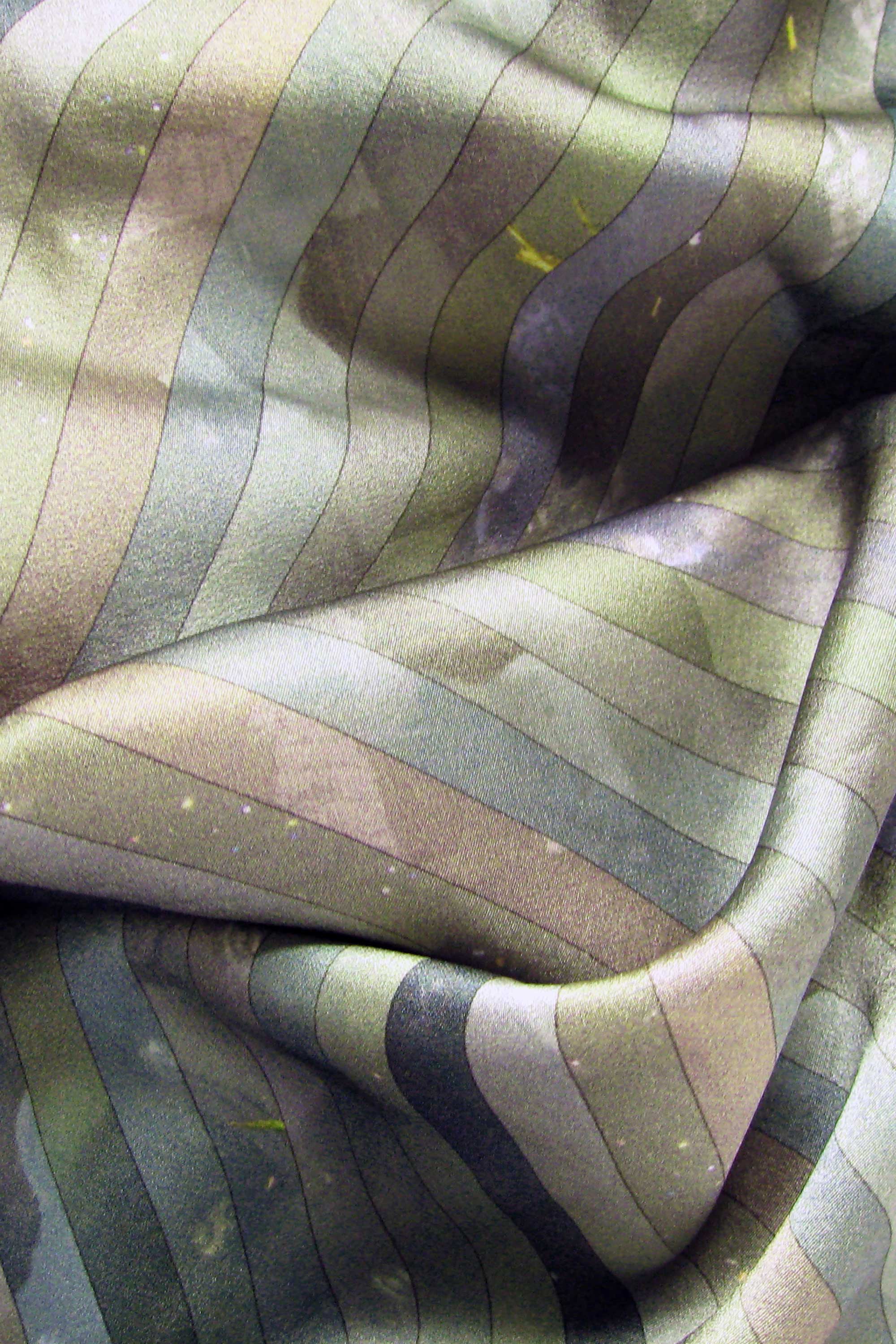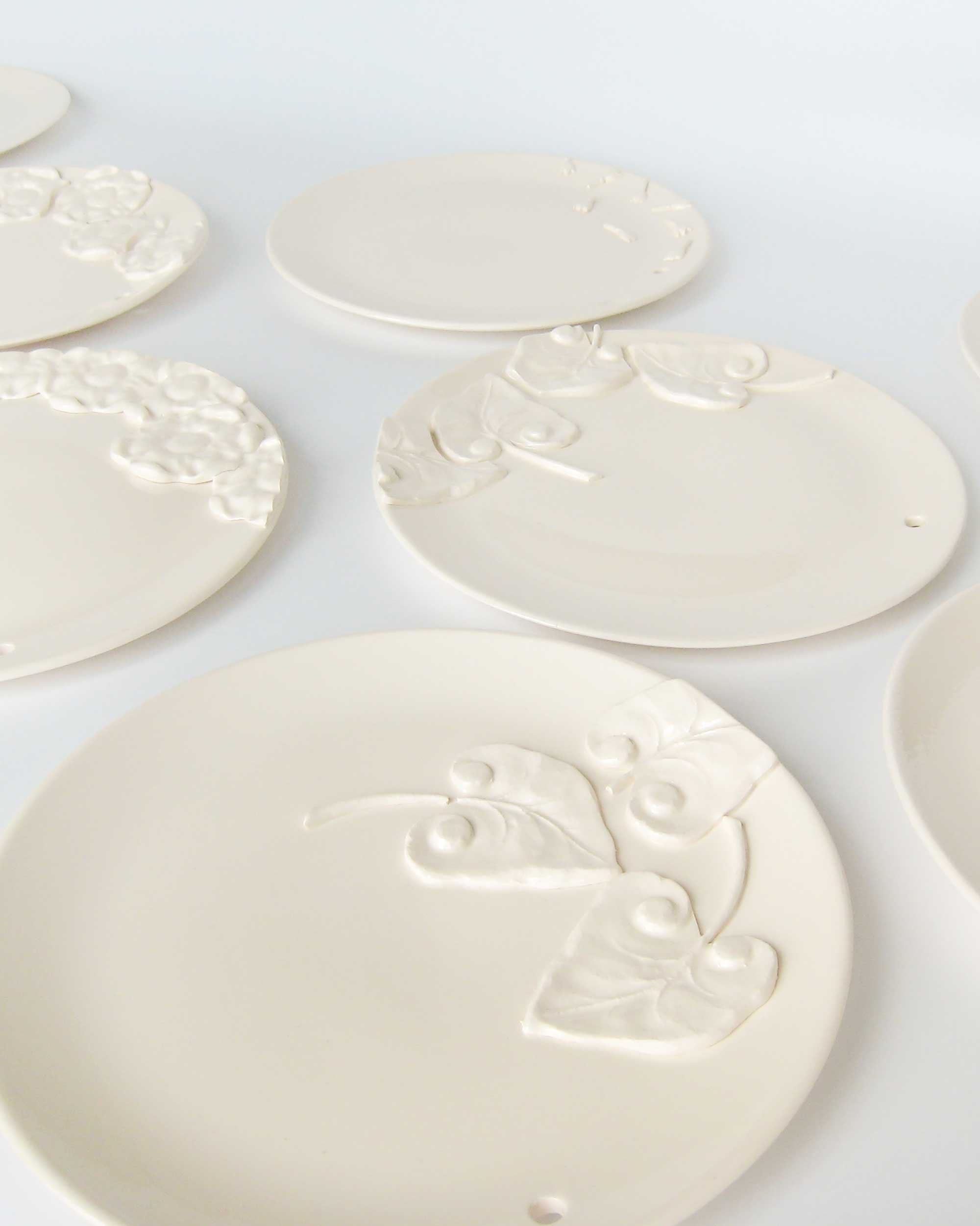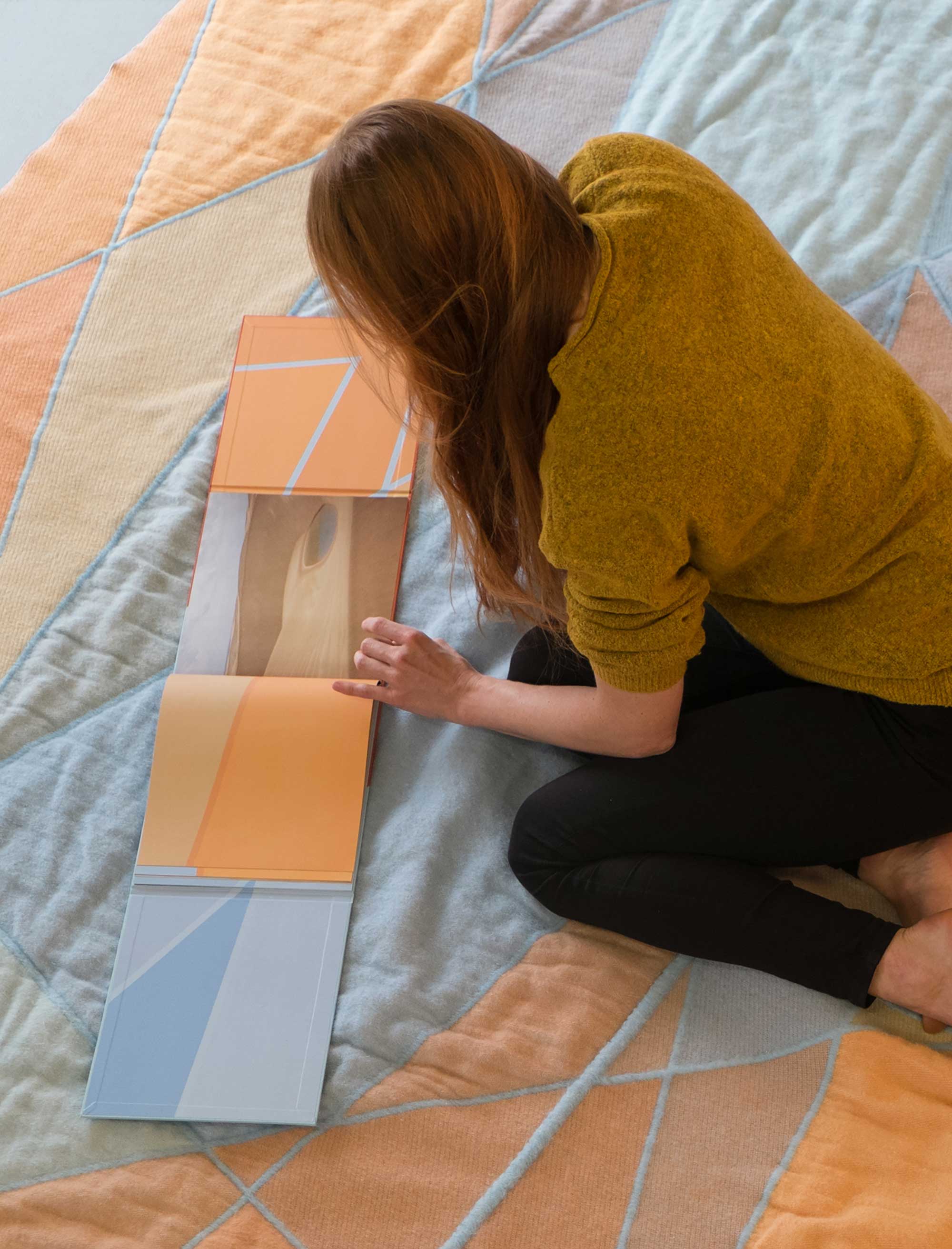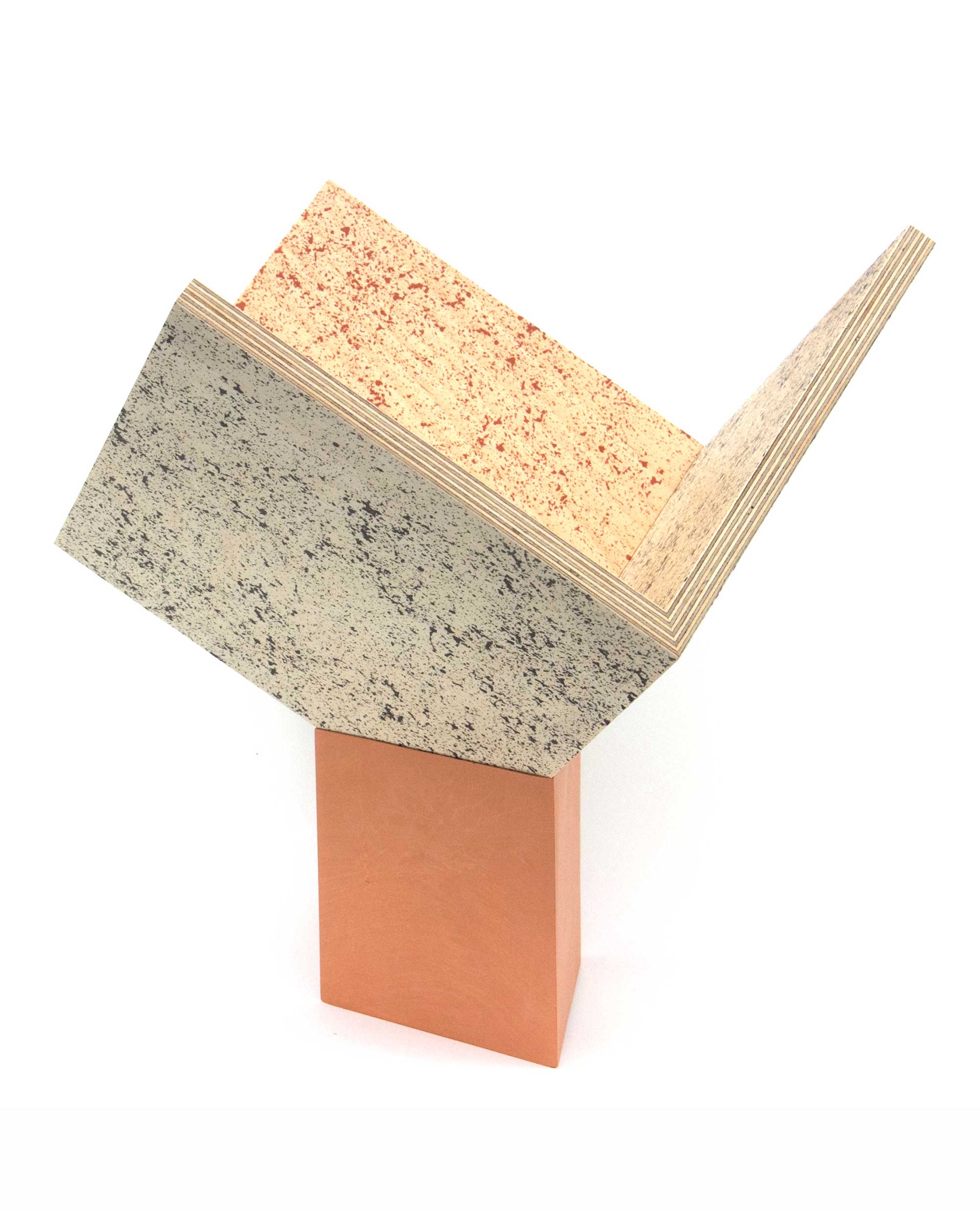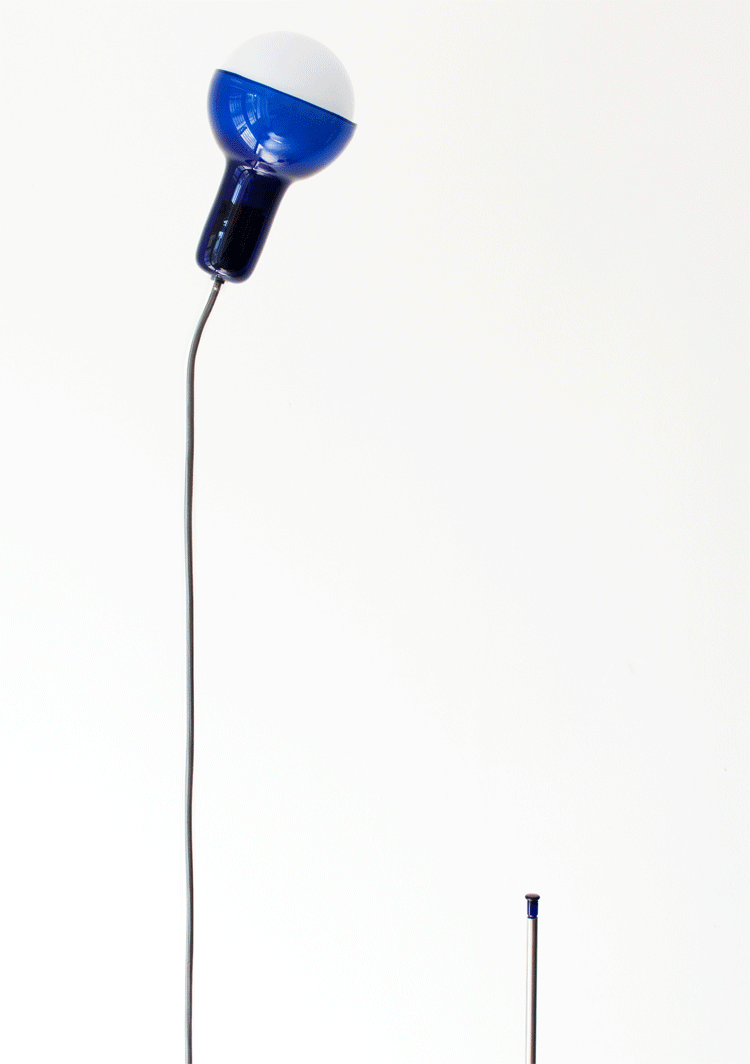Tanning Laboratory
During the exhibition 'Handmade' at the 'Zuiderzeemuseum' in Enkhuizen (NL), Designer Merel Karhof went in the head off of a lab technician. In her “Tanning Laboratory” she shows a series of new products with which she exposes the history of the old Dutch tanning craft, and explores new applications with this technique
Tanning Laboratory
During the exhibition 'Handmade' at the 'Zuiderzeemuseum' in Enkhuizen (NL), Designer Merel Karhof went in the head off of a lab technician. In her “Tanning Laboratory” she shows a series of new products with which she exposes the history of the old Dutch tanning craft, and explores new applications with this technique
Tanning Laboratory
During the exhibition 'Handmade' at the 'Zuiderzeemuseum' in Enkhuizen (NL), Designer Merel Karhof went in the head off of a lab technician. In her “Tanning Laboratory” she shows a series of new products with which she exposes the history of the old Dutch tanning craft, and explores new applications with this technique
Tanning Laboratory
During the exhibition 'Handmade' at the 'Zuiderzeemuseum' in Enkhuizen (NL), Designer Merel Karhof went in the head off of a lab technician. In her “Tanning Laboratory” she shows a series of new products with which she exposes the history of the old Dutch tanning craft, and explores new applications with this technique
Tanning Laboratory
During the exhibition 'Handmade' at the 'Zuiderzeemuseum' in Enkhuizen (NL), Designer Merel Karhof went in the head off of a lab technician. In her “Tanning Laboratory” she shows a series of new products with which she exposes the history of the old Dutch tanning craft, and explores new applications with this technique
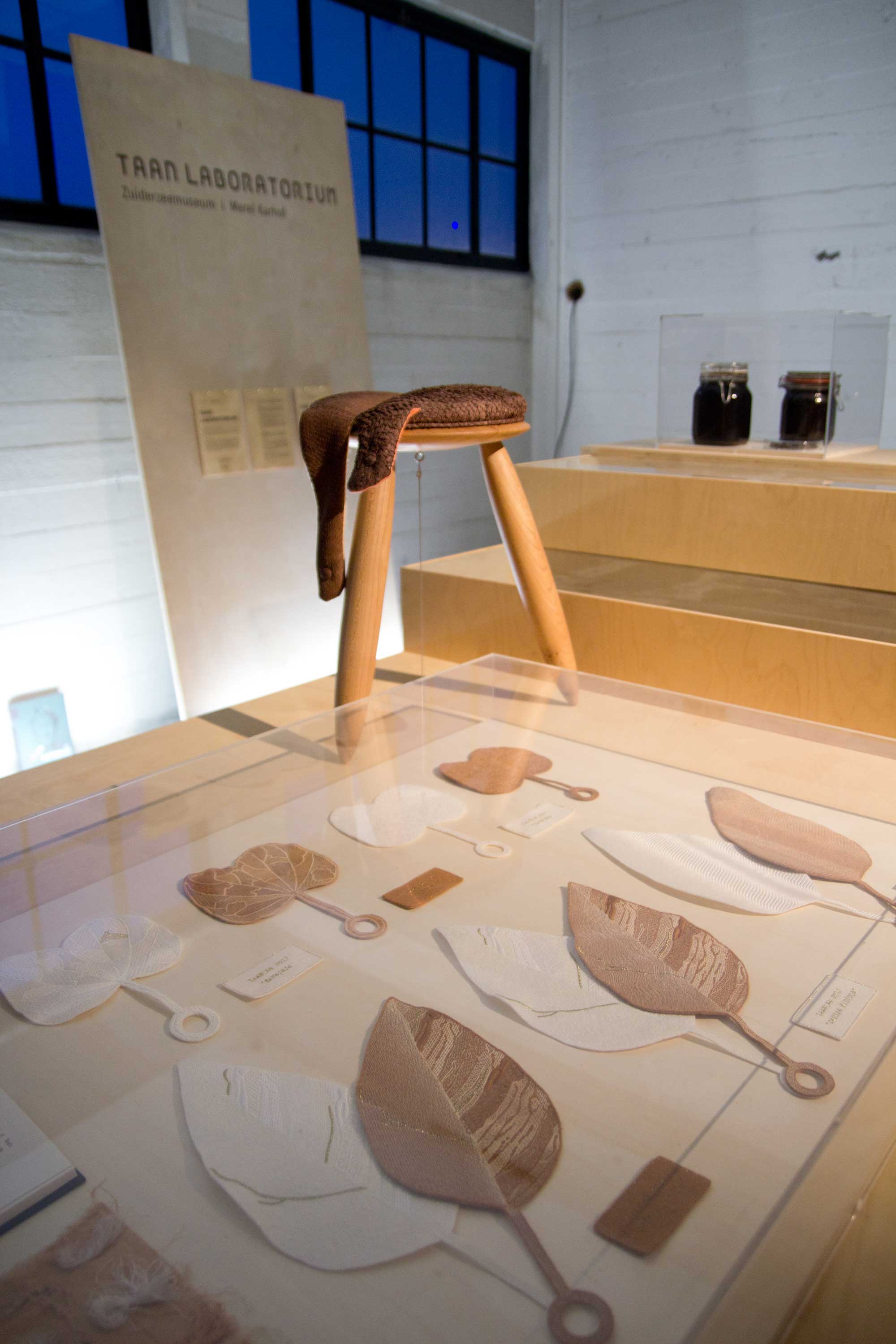
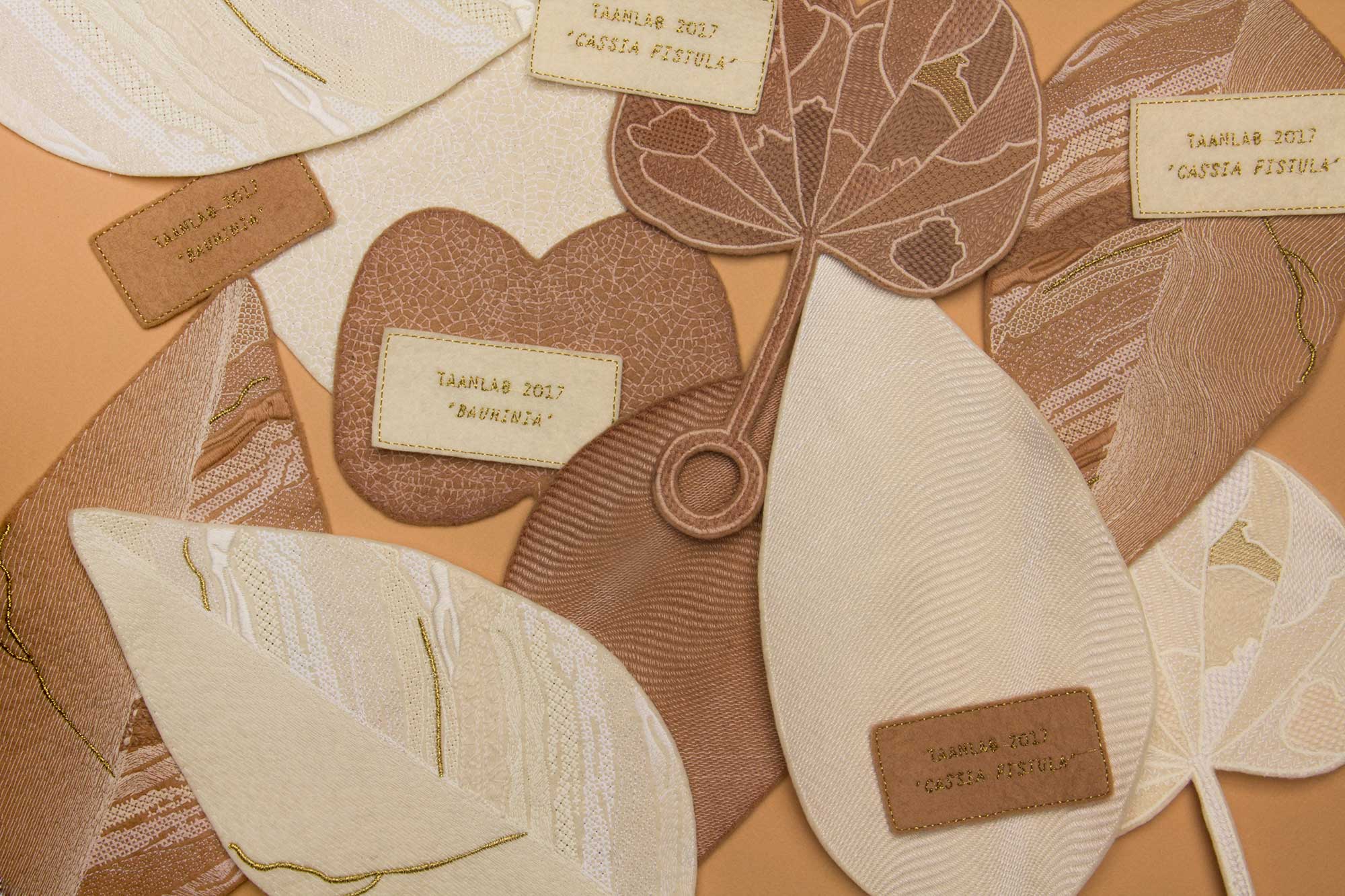
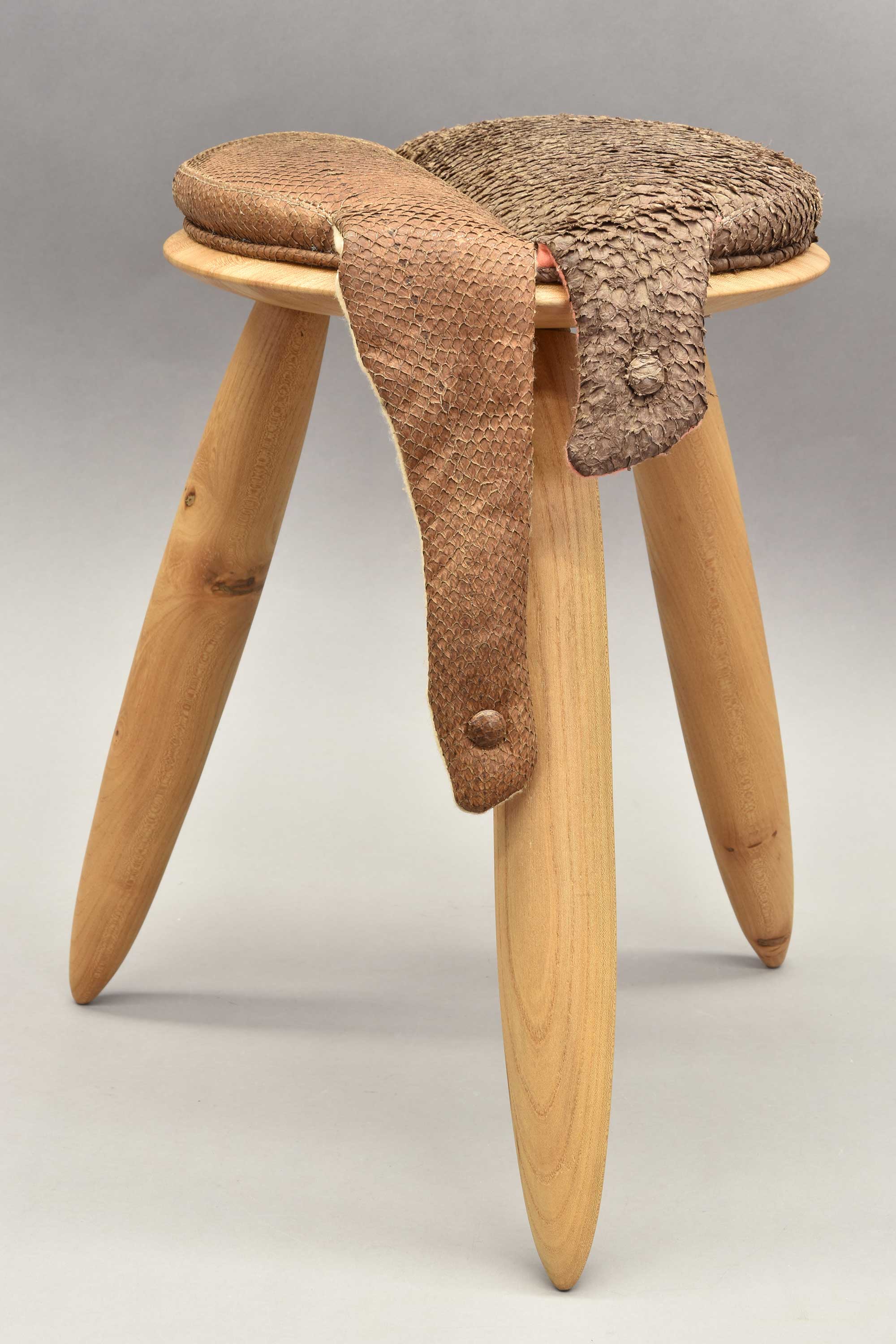
'In the exhibition we find a setting that feels like a laboratory. There are laboratory attributes, but it bears also a resemblance to a cabinet of curiosities because there are specimen jars with fish skins in a brown liquid, petri dishes containing rough pieces of gemstone. Also, we see the lab-coat from the lab technician, which is brown instead of white. And a lot of tree leaves, imitated in embroidered felt, ‘dried’ with name-tags, which we are familiar with from the herbarium. It seems the lab technician has just left.
Formerly cotton fish nets, sails or ropes where being tanned with cutch to prevent rotting. Like that it was being conserved. The tanning was done in a cauldron. For a few hours the fishnet, sail or rope was immersed in a hot cutch solution. Cutch was extracted from the trunk of the acacia tree and solidified in a moulds made of tree leafs.
In her lab, Merel Karhof shows large round scarves tailored to the size of the tanning cauldron to stools upholstered with fish skins tanned in the cutch fluid. But as well a collection of jewellery pieces, which celebrates the beauty of the “raw” cutch.
'In the exhibition we find a setting that feels like a laboratory. There are laboratory attributes, but it bears also a resemblance to a cabinet of curiosities because there are specimen jars with fish skins in a brown liquid, petri dishes containing rough pieces of gemstone. Also, we see the lab-coat from the lab technician, which is brown instead of white. And a lot of tree leaves, imitated in embroidered felt, ‘dried’ with name-tags, which we are familiar with from the herbarium. It seems the lab technician has just left.
Formerly cotton fish nets, sails or ropes where being tanned with cutch to prevent rotting. Like that it was being conserved. The tanning was done in a cauldron. For a few hours the fishnet, sail or rope was immersed in a hot cutch solution. Cutch was extracted from the trunk of the acacia tree and solidified in a moulds made of tree leafs.
In her lab, Merel Karhof shows large round scarves tailored to the size of the tanning cauldron to stools upholstered with fish skins tanned in the cutch fluid. But as well a collection of jewellery pieces, which celebrates the beauty of the “raw” cutch.
'In the exhibition we find a setting that feels like a laboratory. There are laboratory attributes, but it bears also a resemblance to a cabinet of curiosities because there are specimen jars with fish skins in a brown liquid, petri dishes containing rough pieces of gemstone. Also, we see the lab-coat from the lab technician, which is brown instead of white. And a lot of tree leaves, imitated in embroidered felt, ‘dried’ with name-tags, which we are familiar with from the herbarium. It seems the lab technician has just left.
Formerly cotton fish nets, sails or ropes where being tanned with cutch to prevent rotting. Like that it was being conserved. The tanning was done in a cauldron. For a few hours the fishnet, sail or rope was immersed in a hot cutch solution. Cutch was extracted from the trunk of the acacia tree and solidified in a moulds made of tree leafs.
In her lab, Merel Karhof shows large round scarves tailored to the size of the tanning cauldron to stools upholstered with fish skins tanned in the cutch fluid. But as well a collection of jewellery pieces, which celebrates the beauty of the “raw” cutch.
'In the exhibition we find a setting that feels like a laboratory. There are laboratory attributes, but it bears also a resemblance to a cabinet of curiosities because there are specimen jars with fish skins in a brown liquid, petri dishes containing rough pieces of gemstone. Also, we see the lab-coat from the lab technician, which is brown instead of white. And a lot of tree leaves, imitated in embroidered felt, ‘dried’ with name-tags, which we are familiar with from the herbarium. It seems the lab technician has just left.
Formerly cotton fish nets, sails or ropes where being tanned with cutch to prevent rotting. Like that it was being conserved. The tanning was done in a cauldron. For a few hours the fishnet, sail or rope was immersed in a hot cutch solution. Cutch was extracted from the trunk of the acacia tree and solidified in a moulds made of tree leafs.
In her lab, Merel Karhof shows large round scarves tailored to the size of the tanning cauldron to stools upholstered with fish skins tanned in the cutch fluid. But as well a collection of jewellery pieces, which celebrates the beauty of the “raw” cutch.
